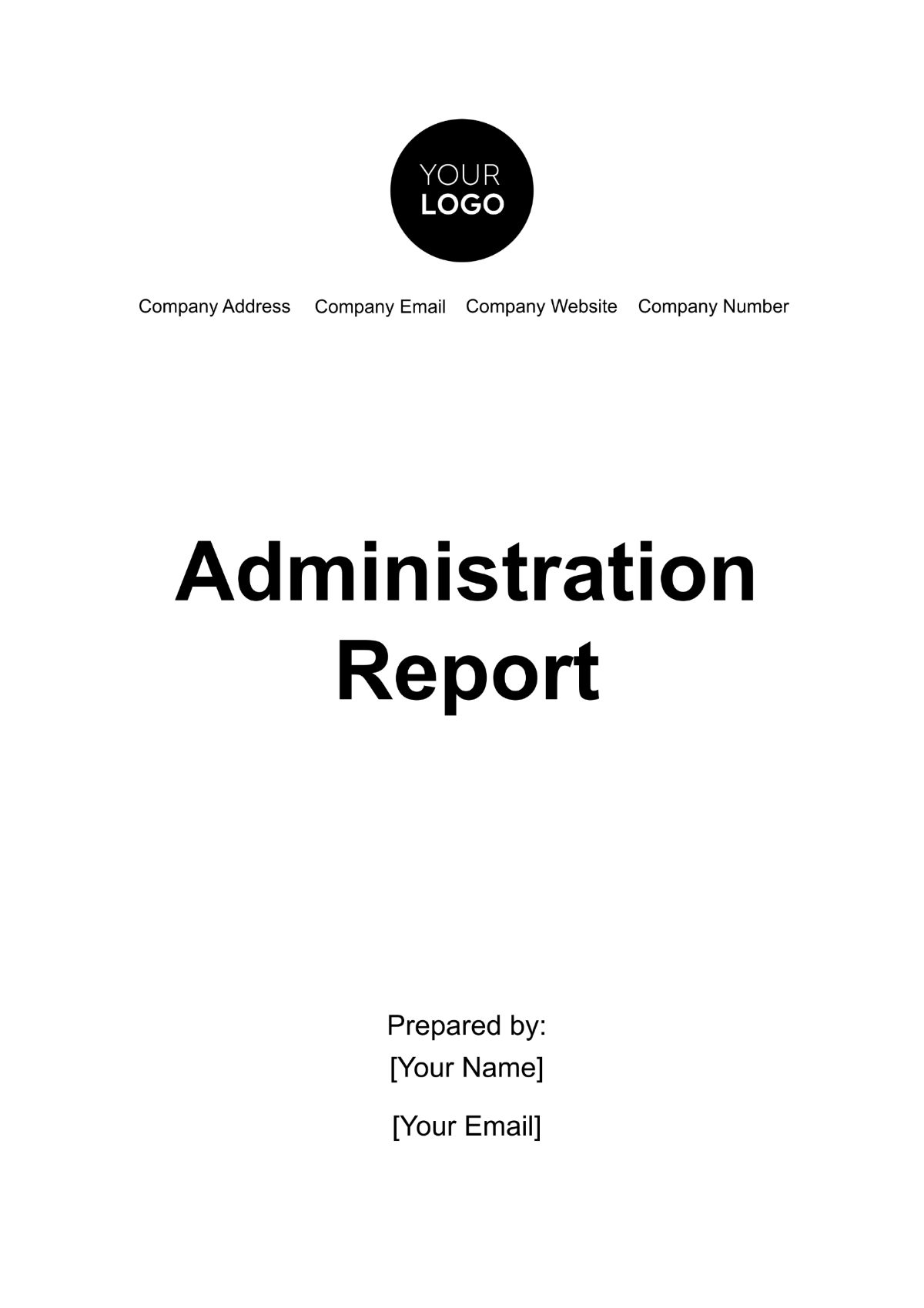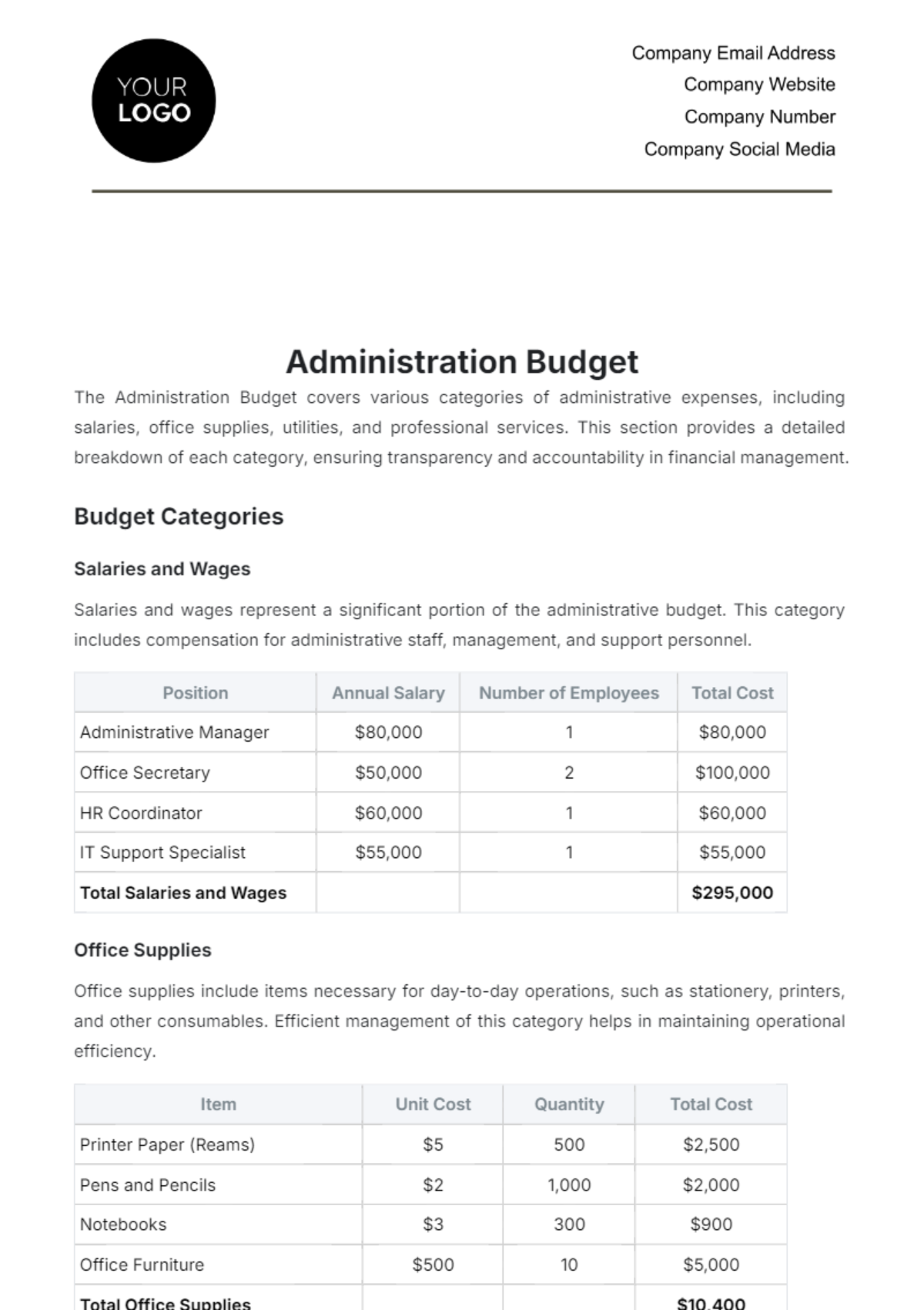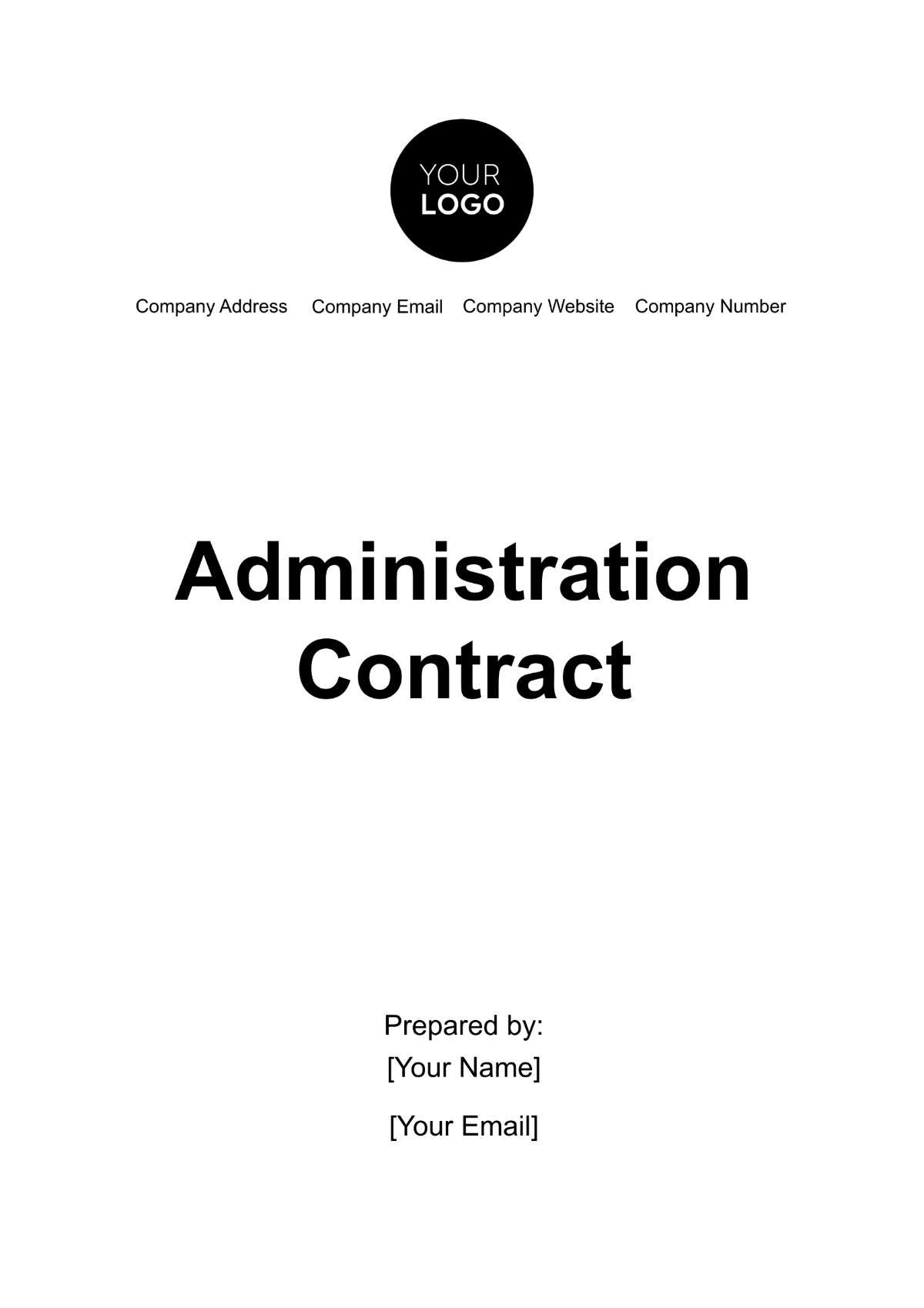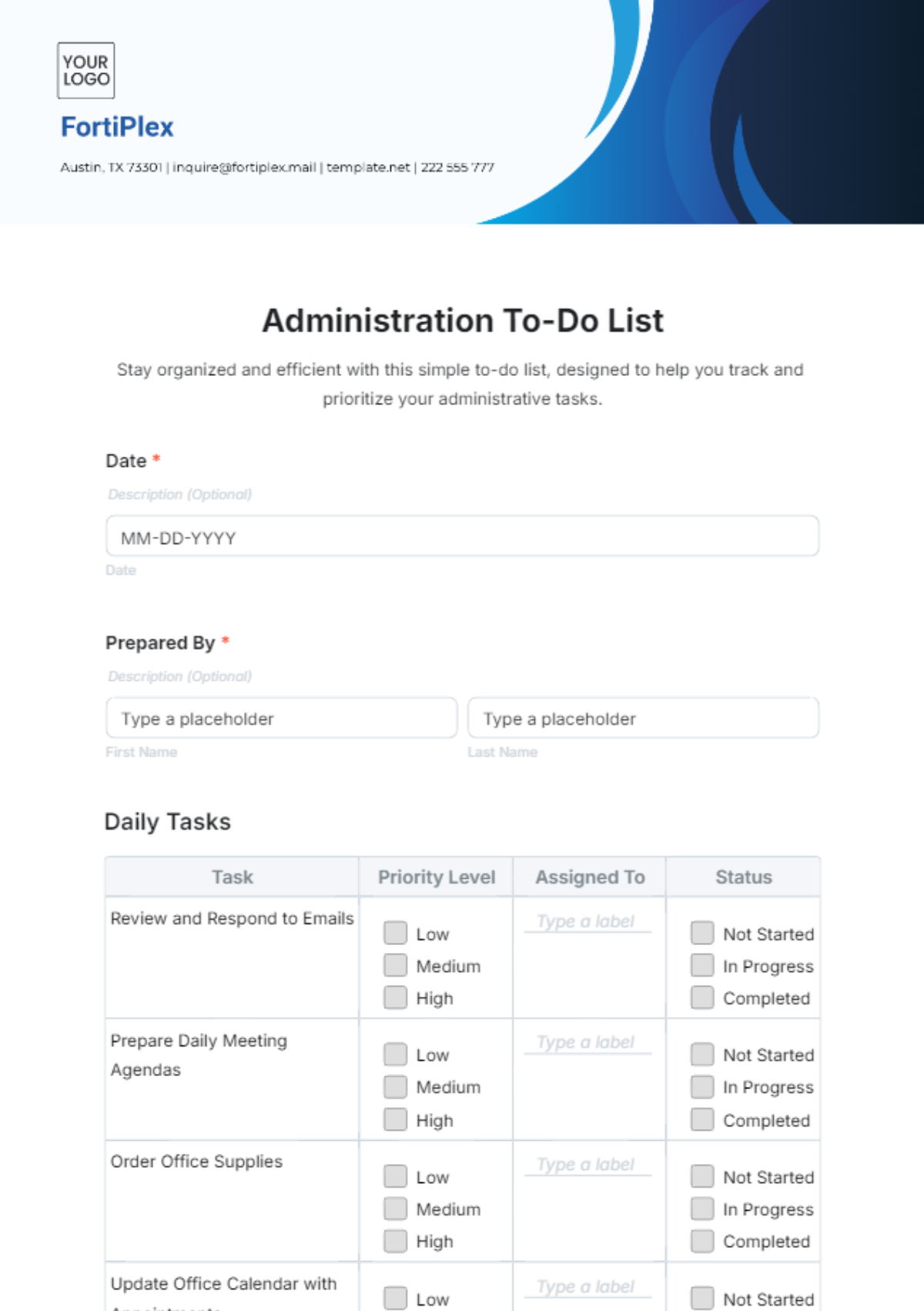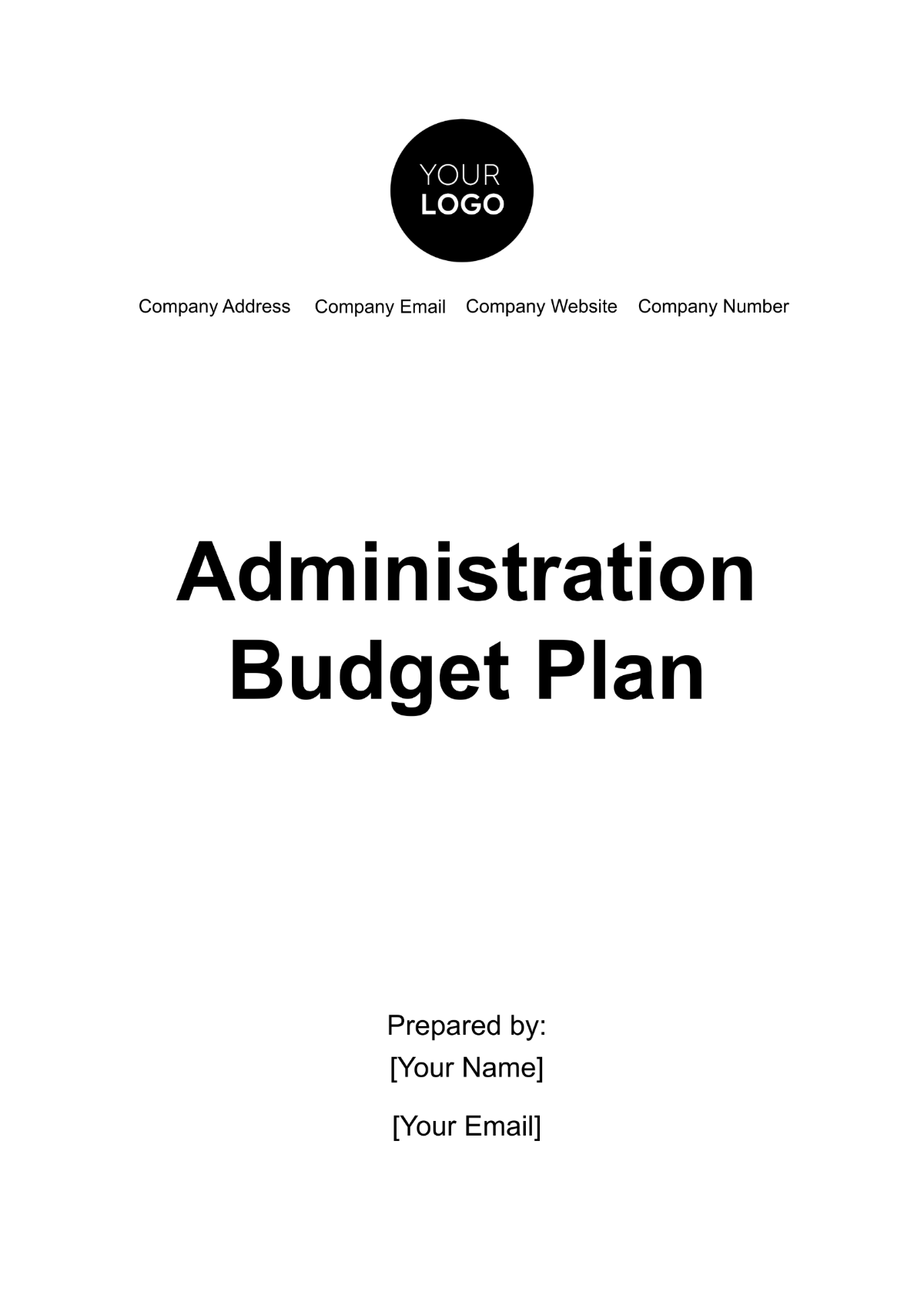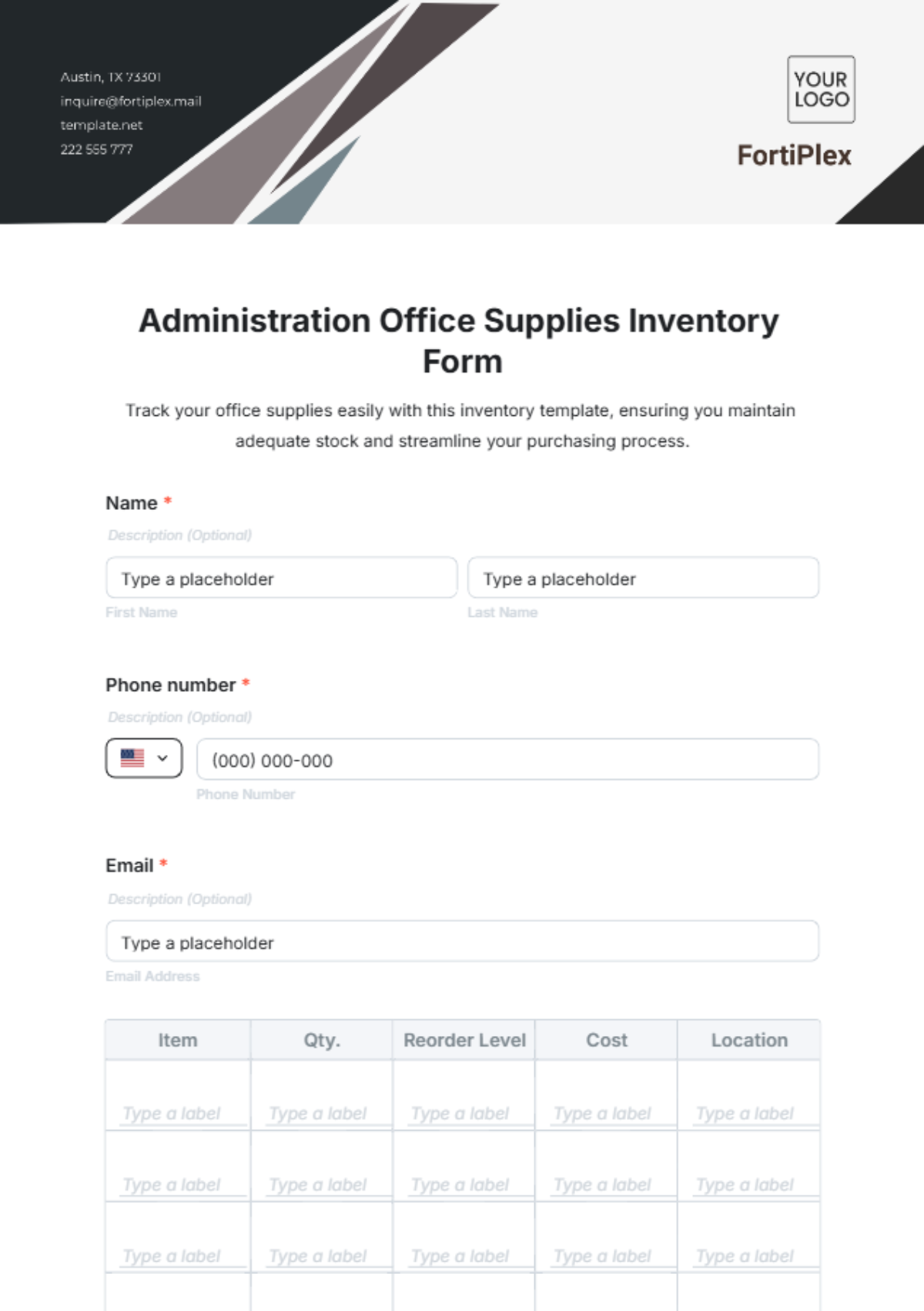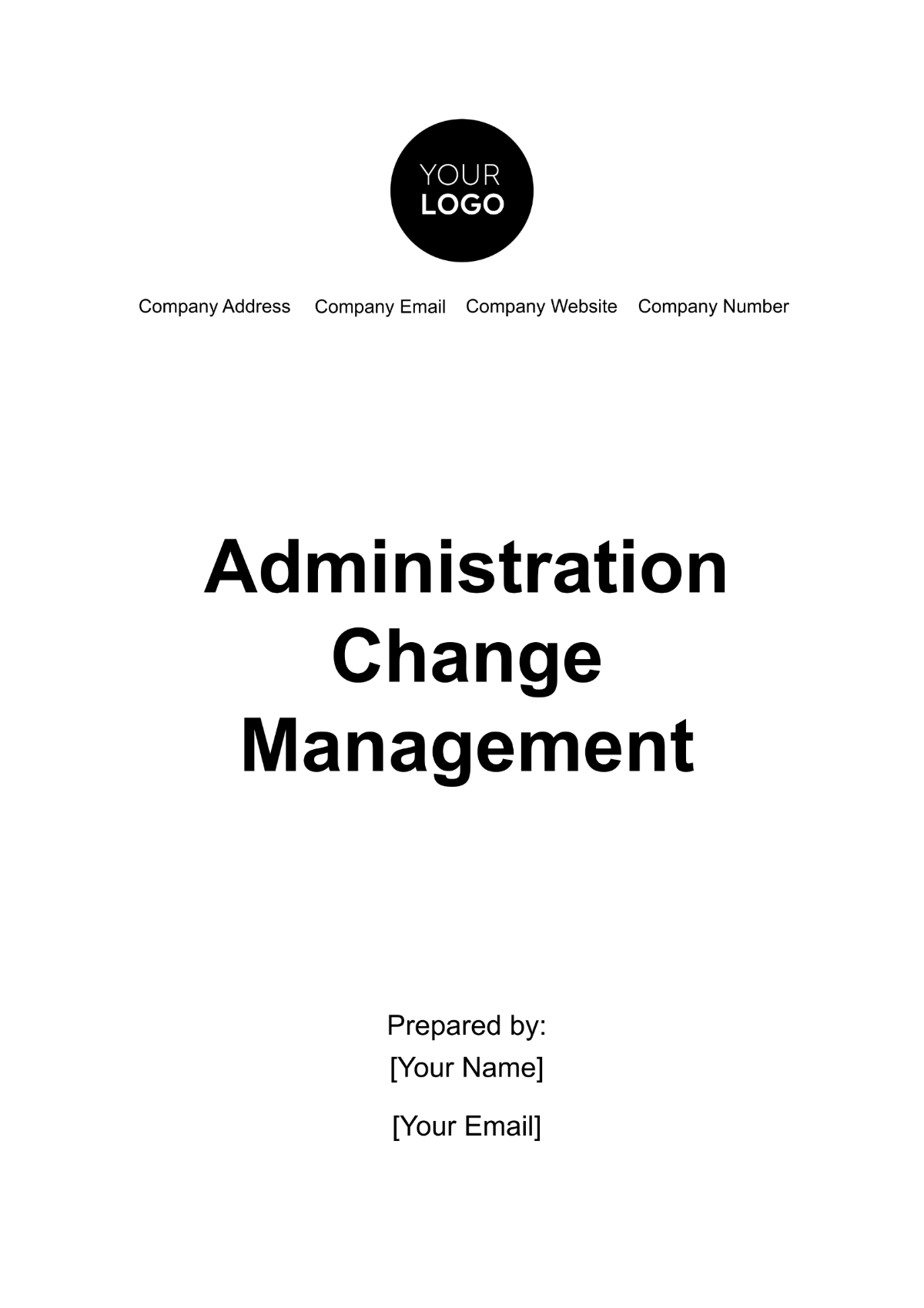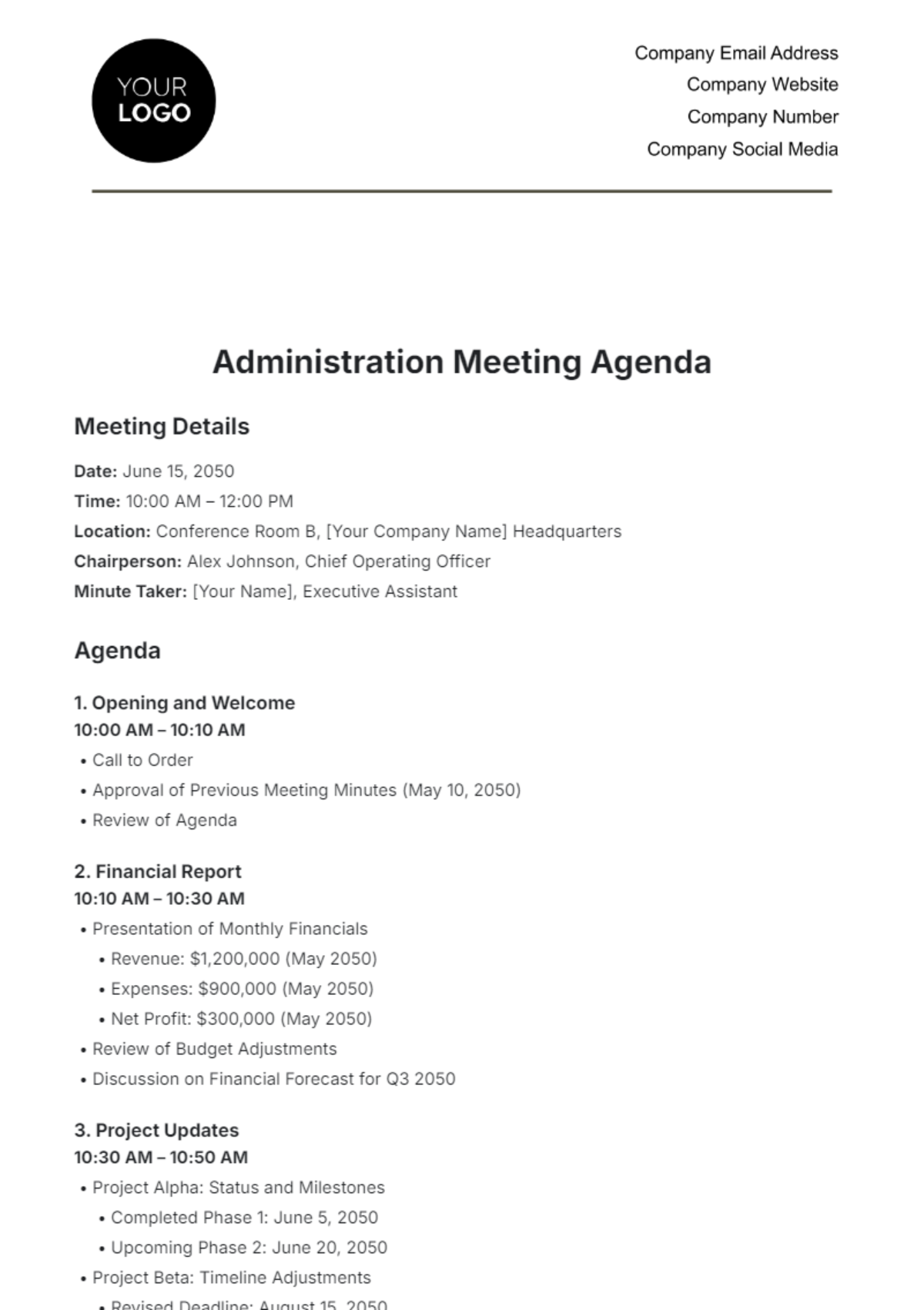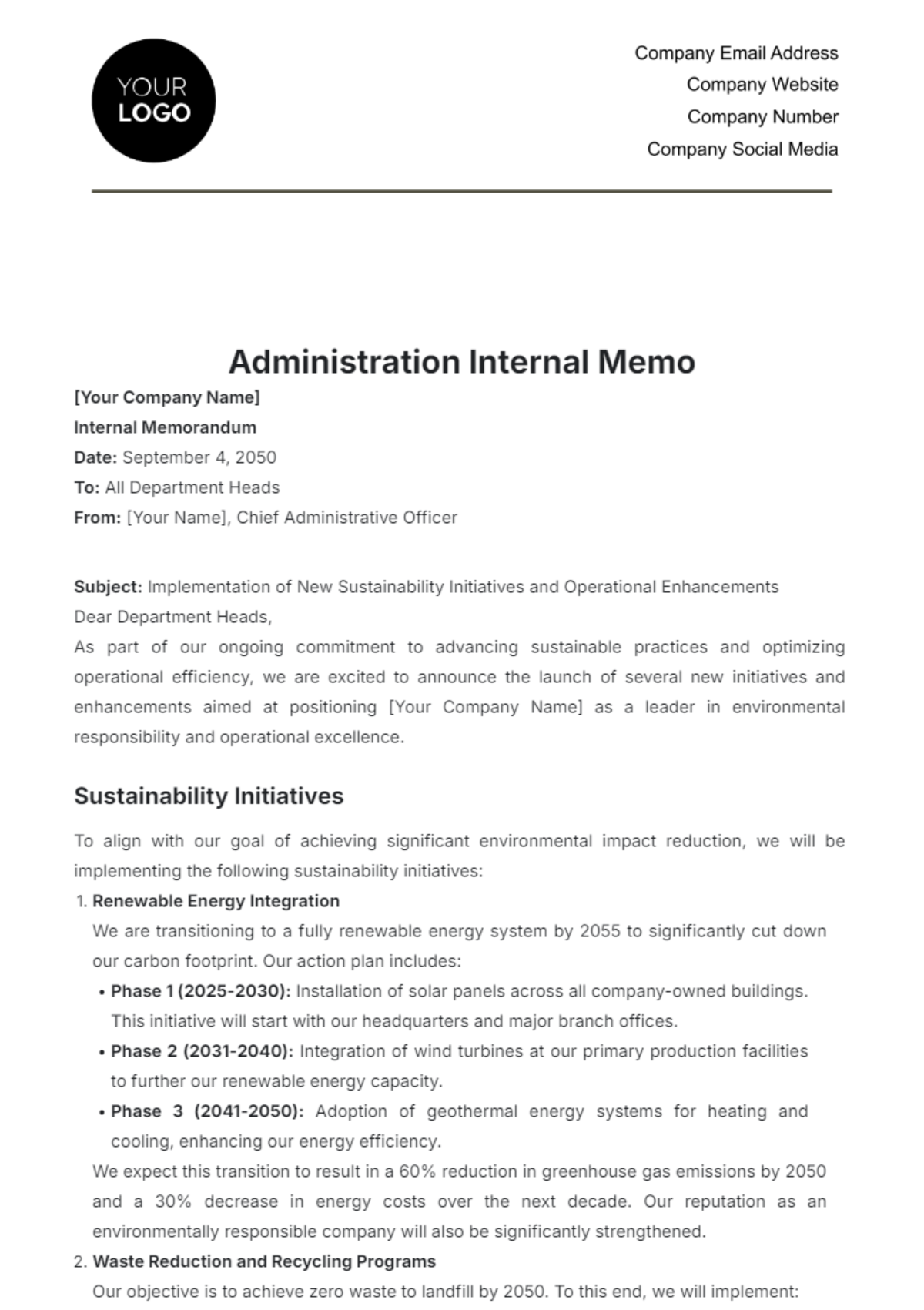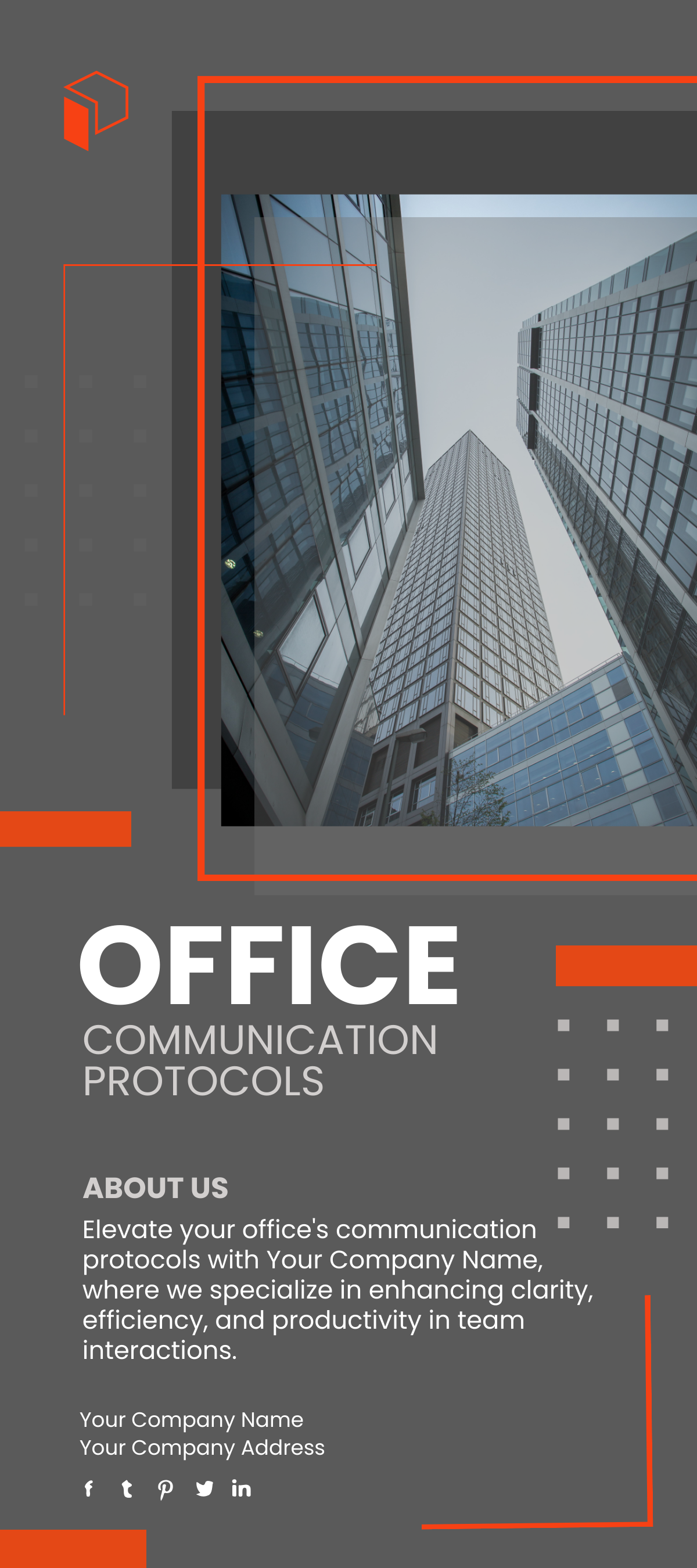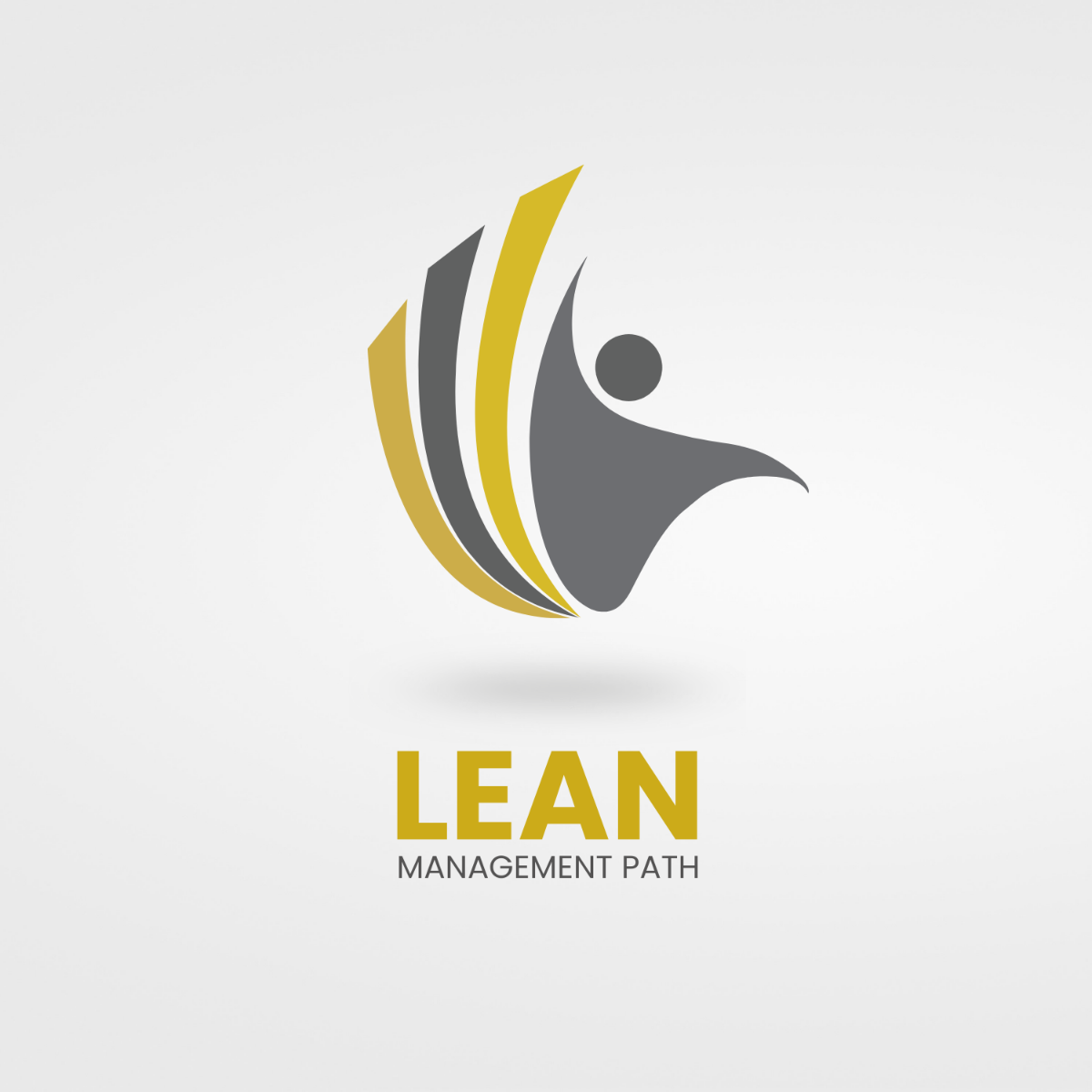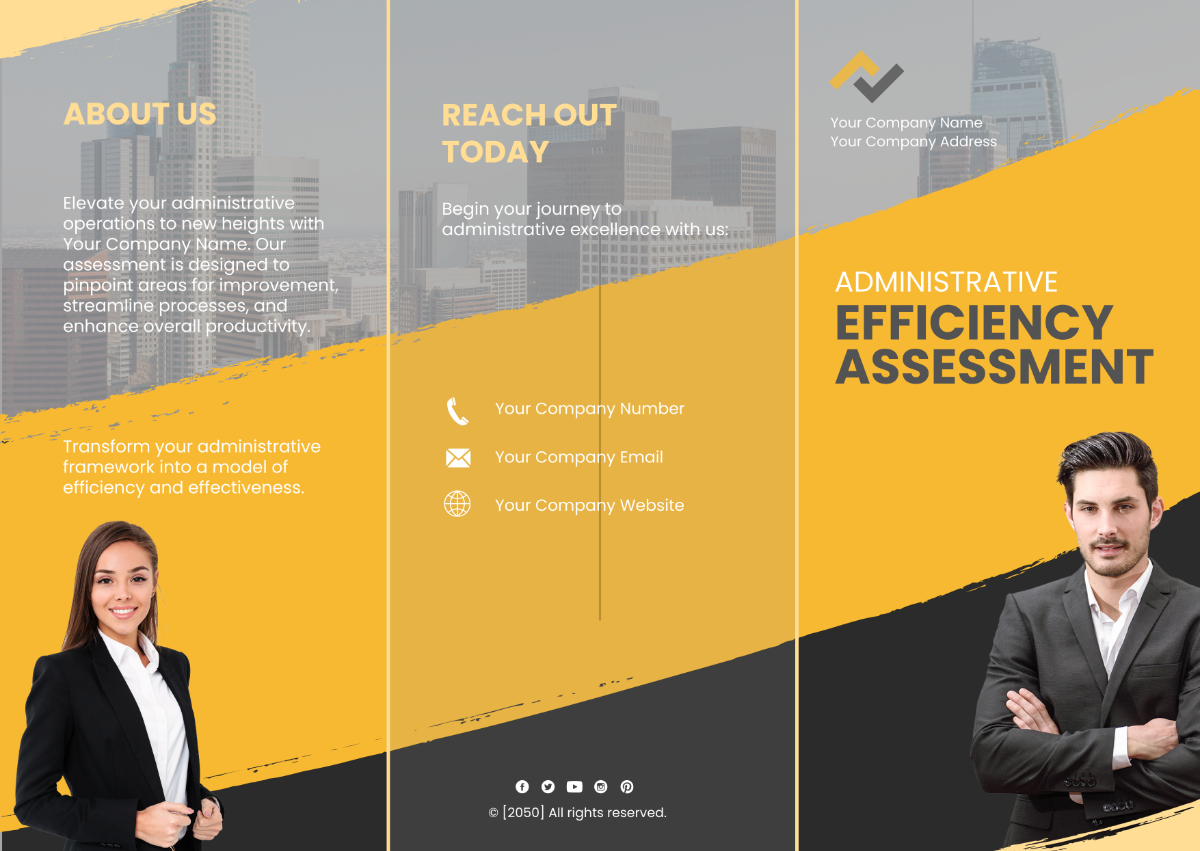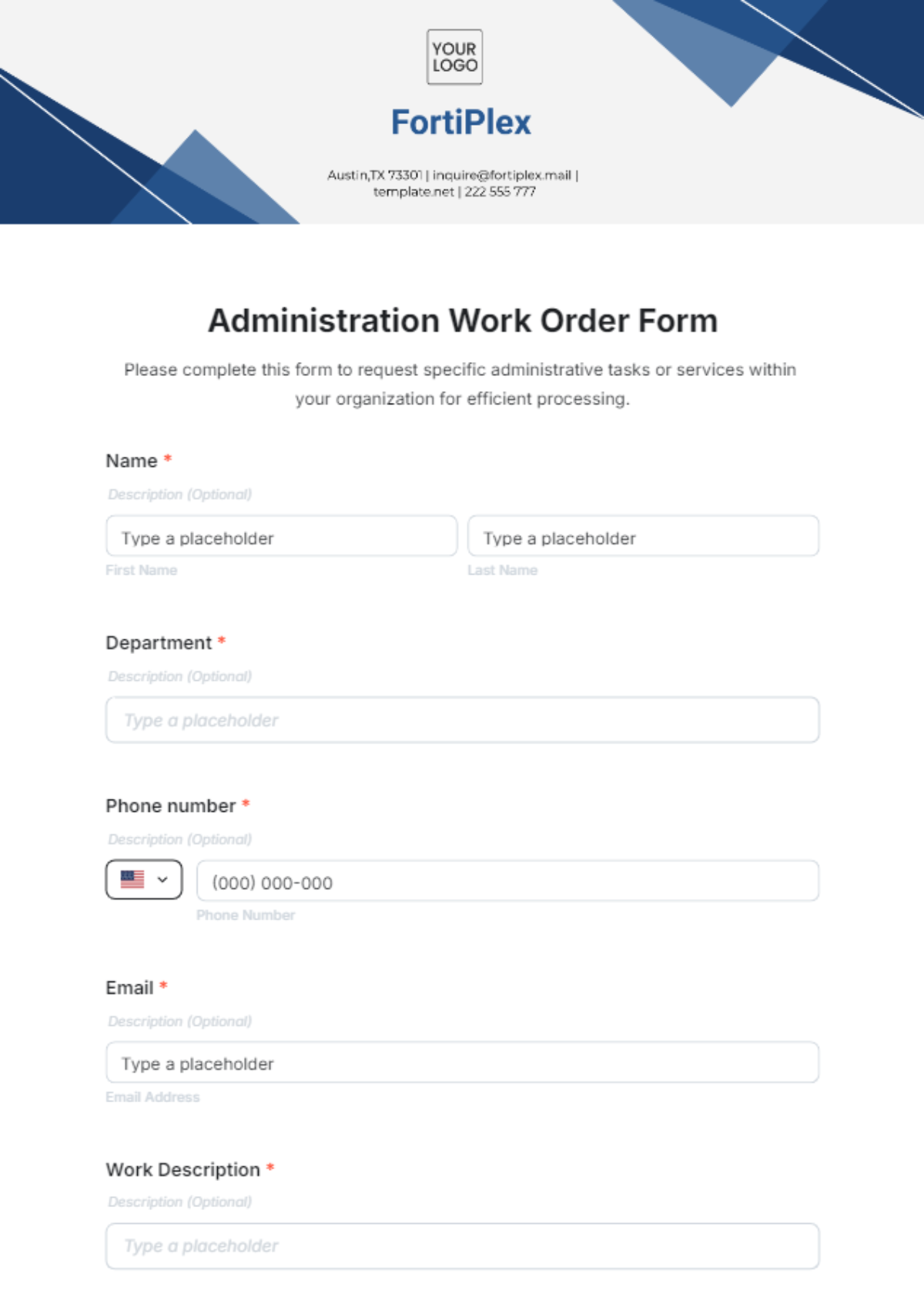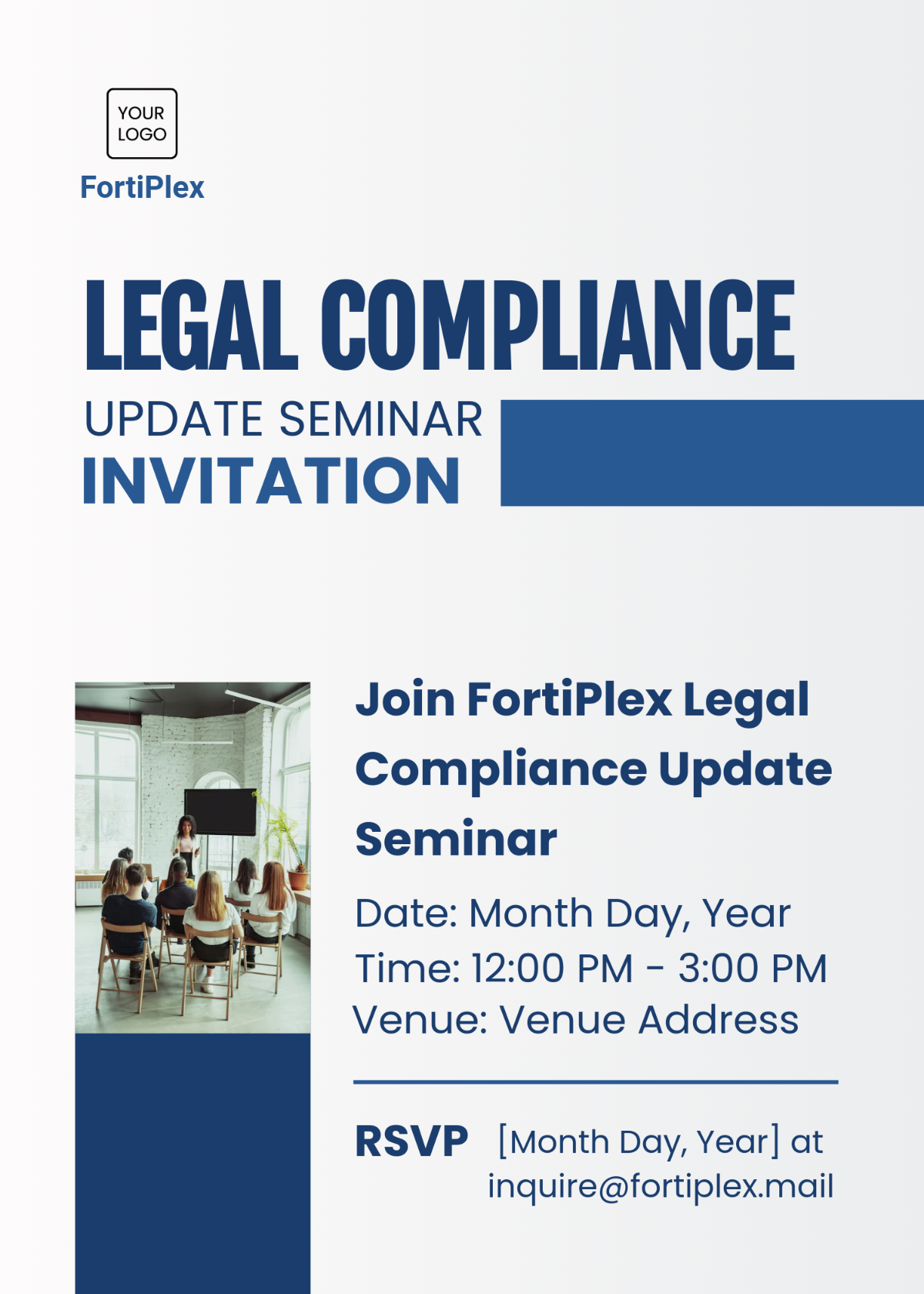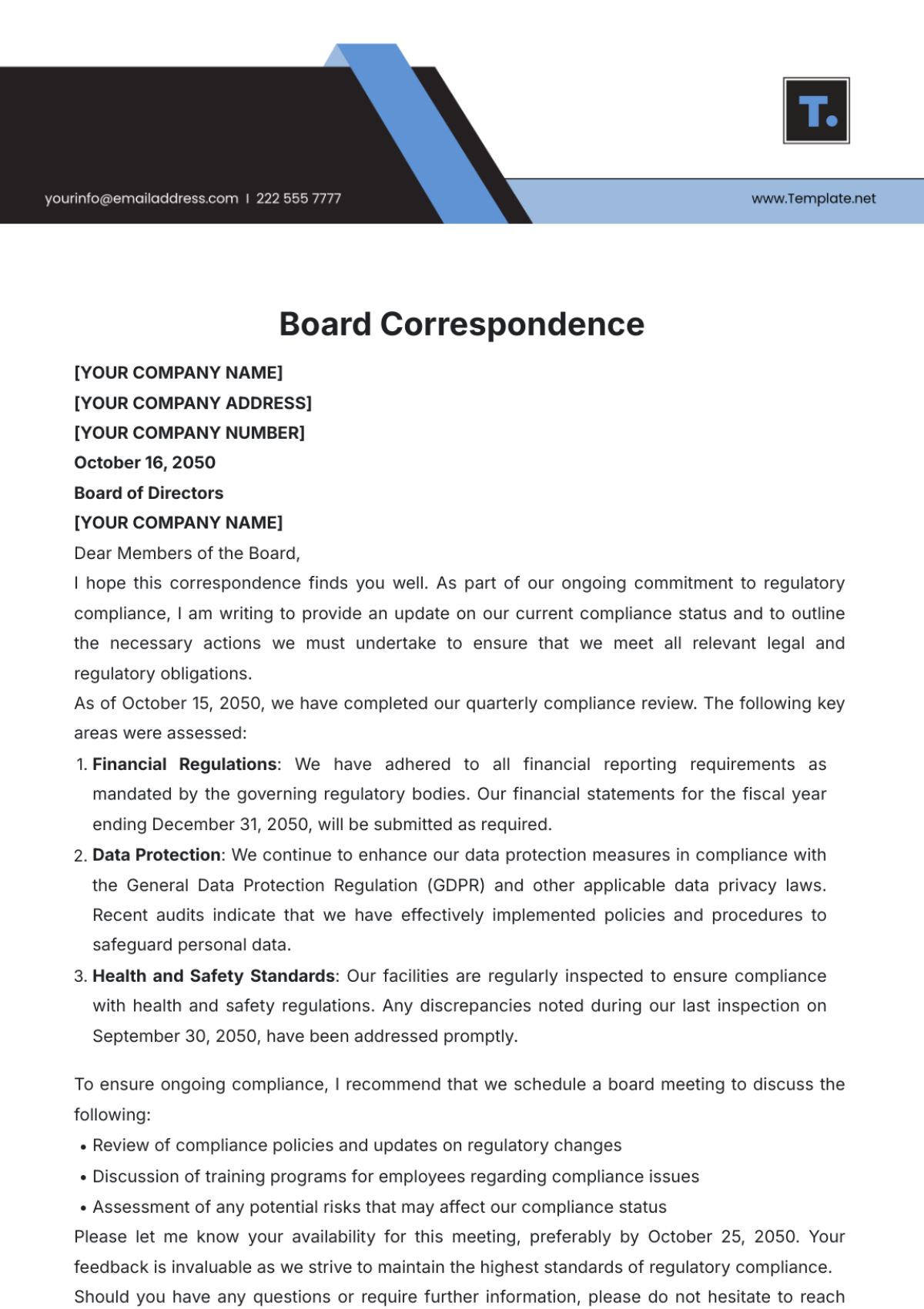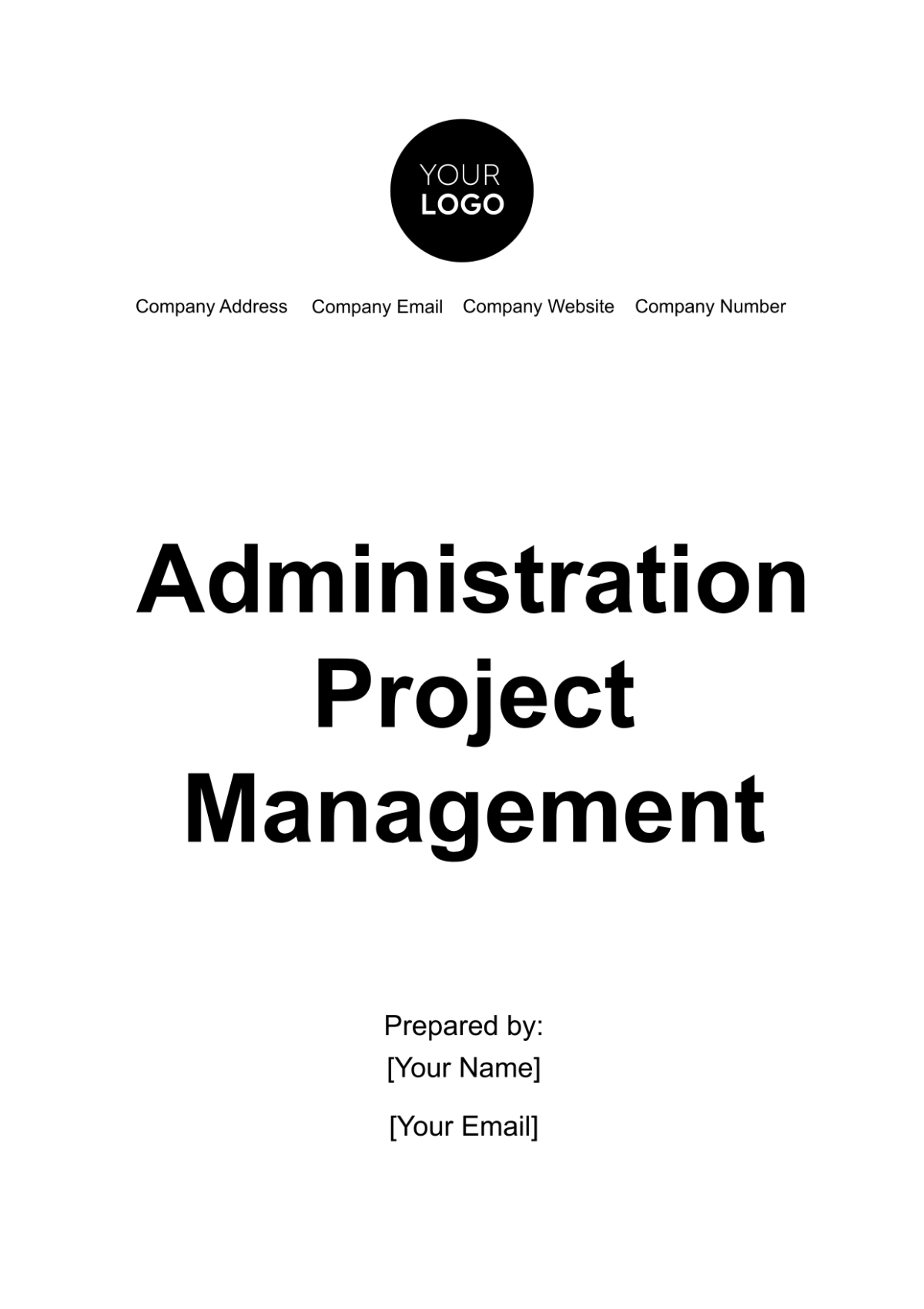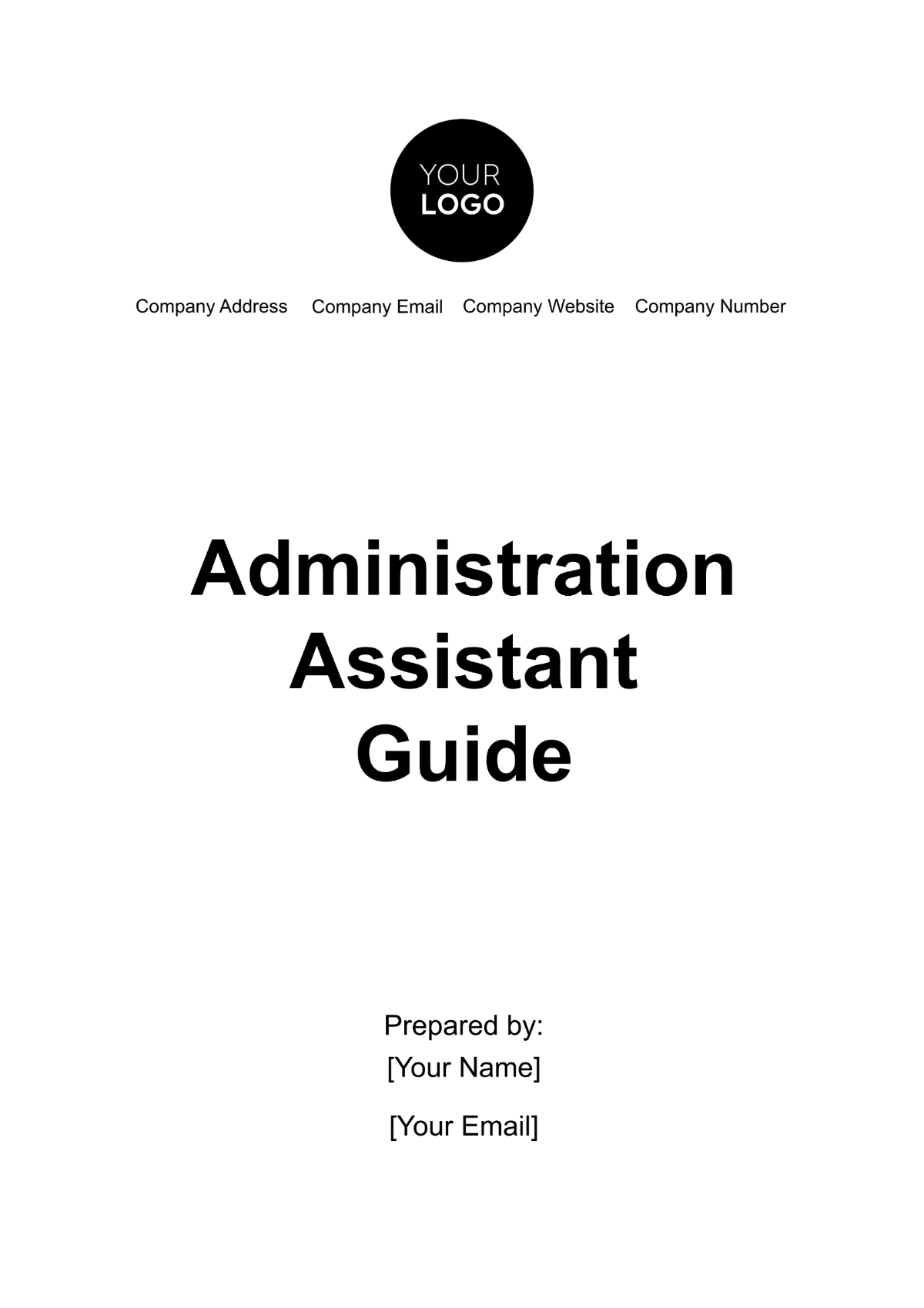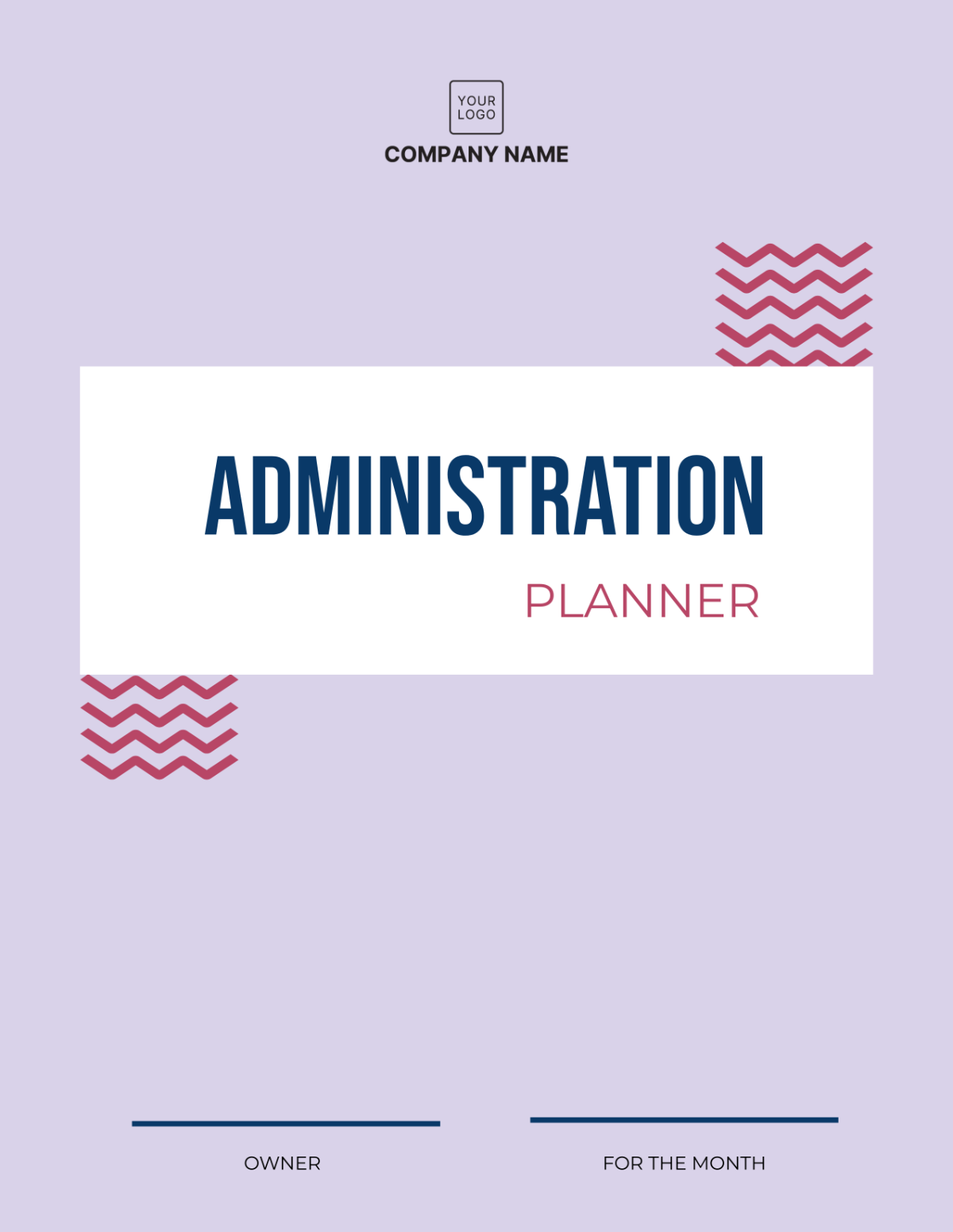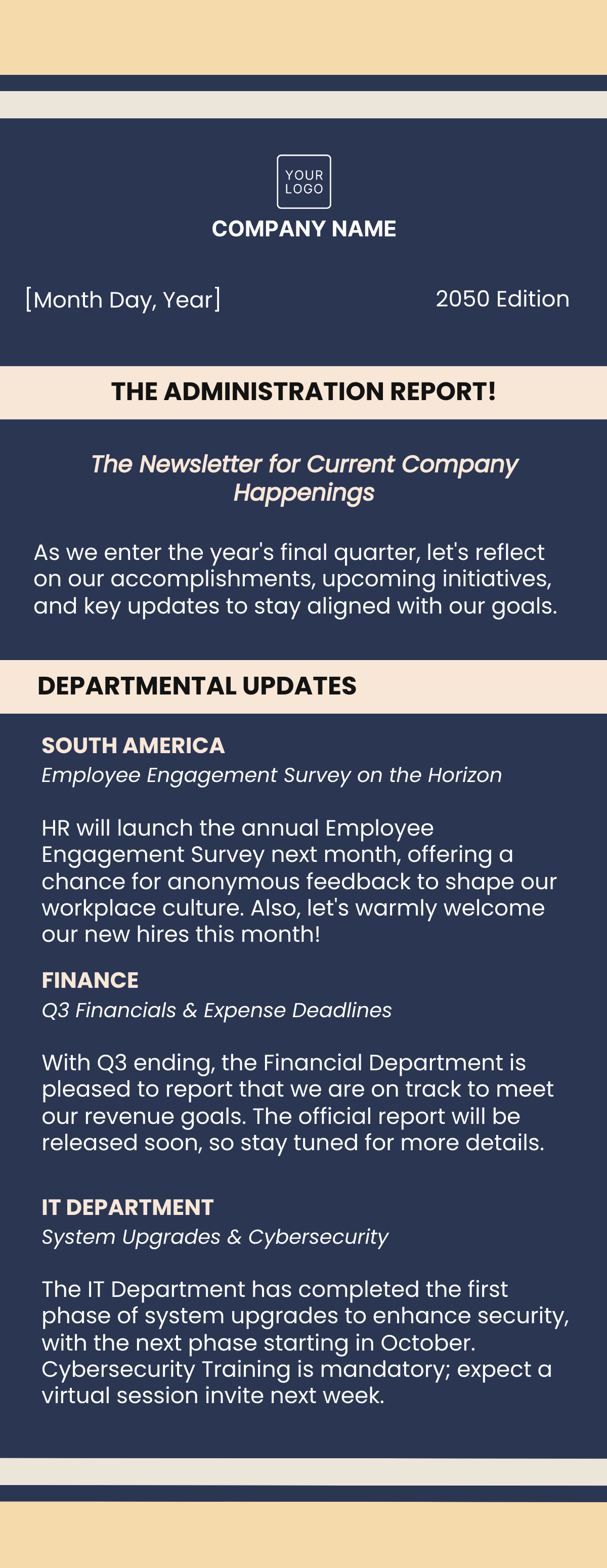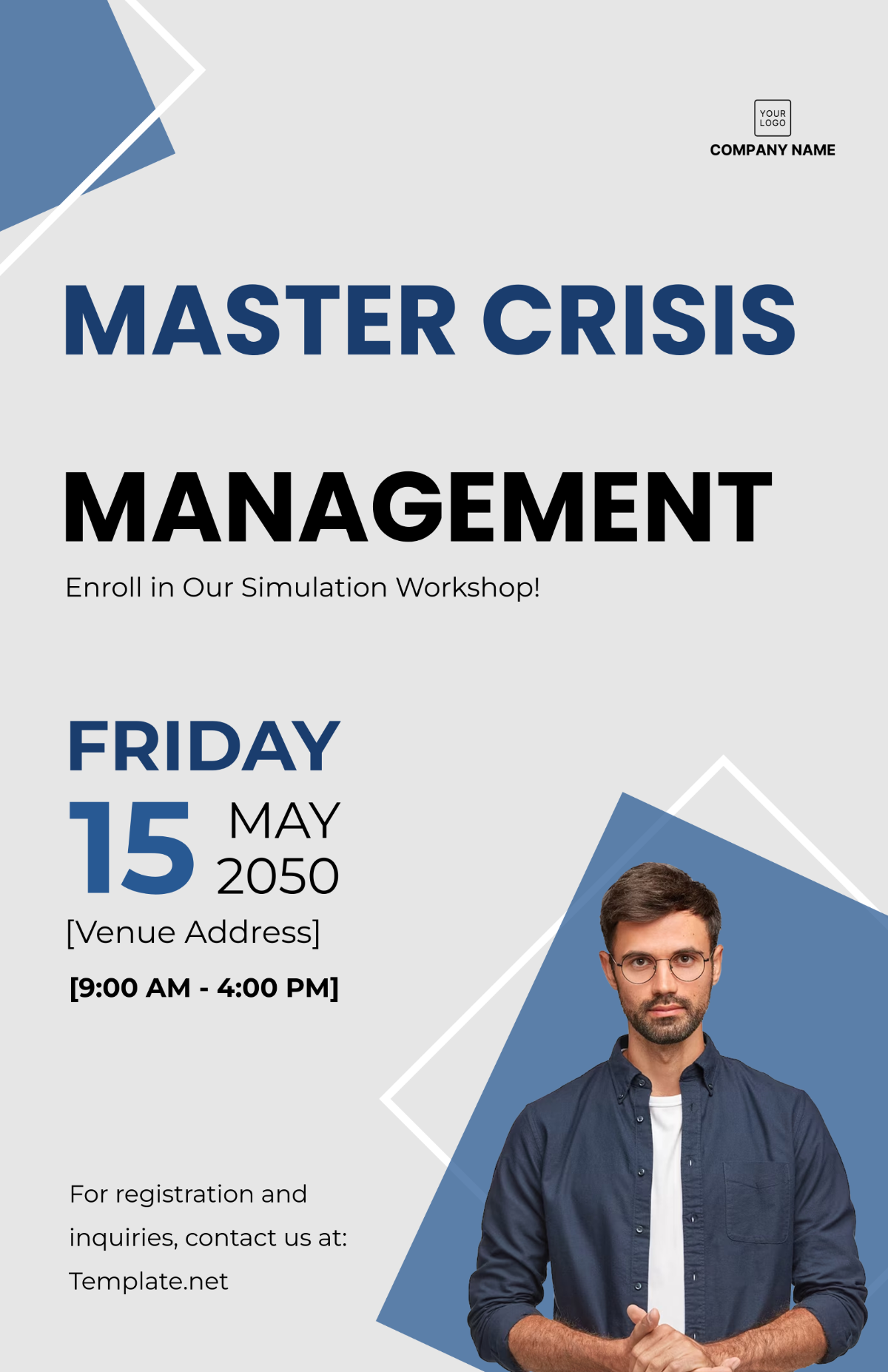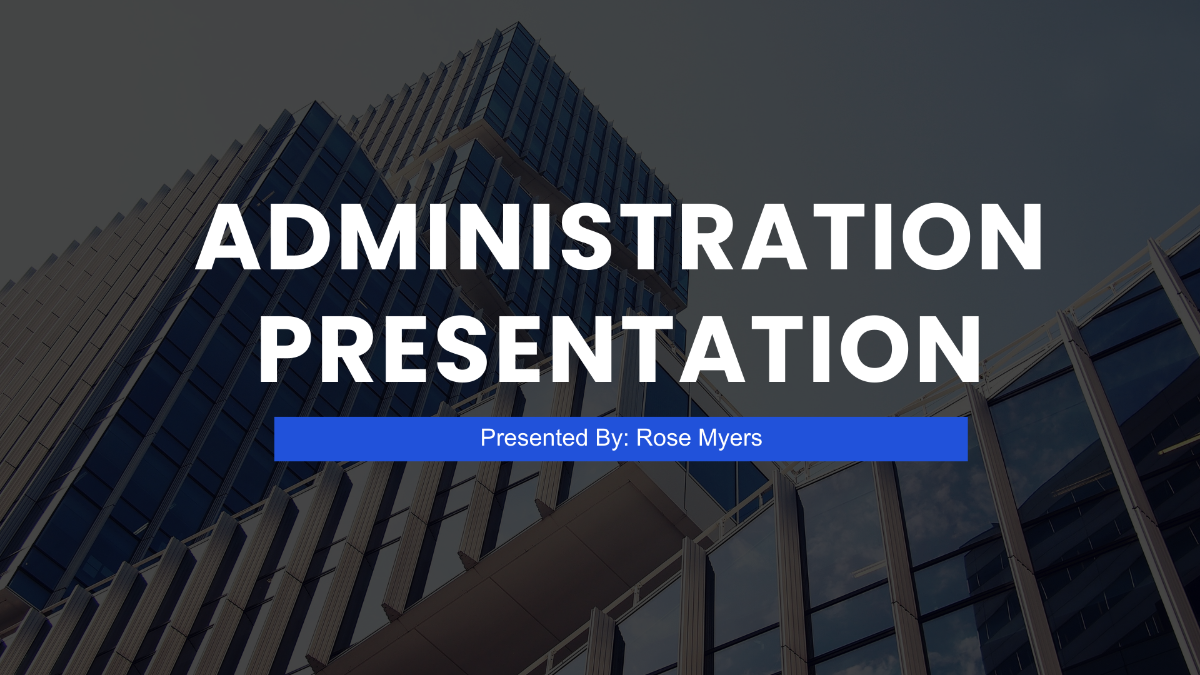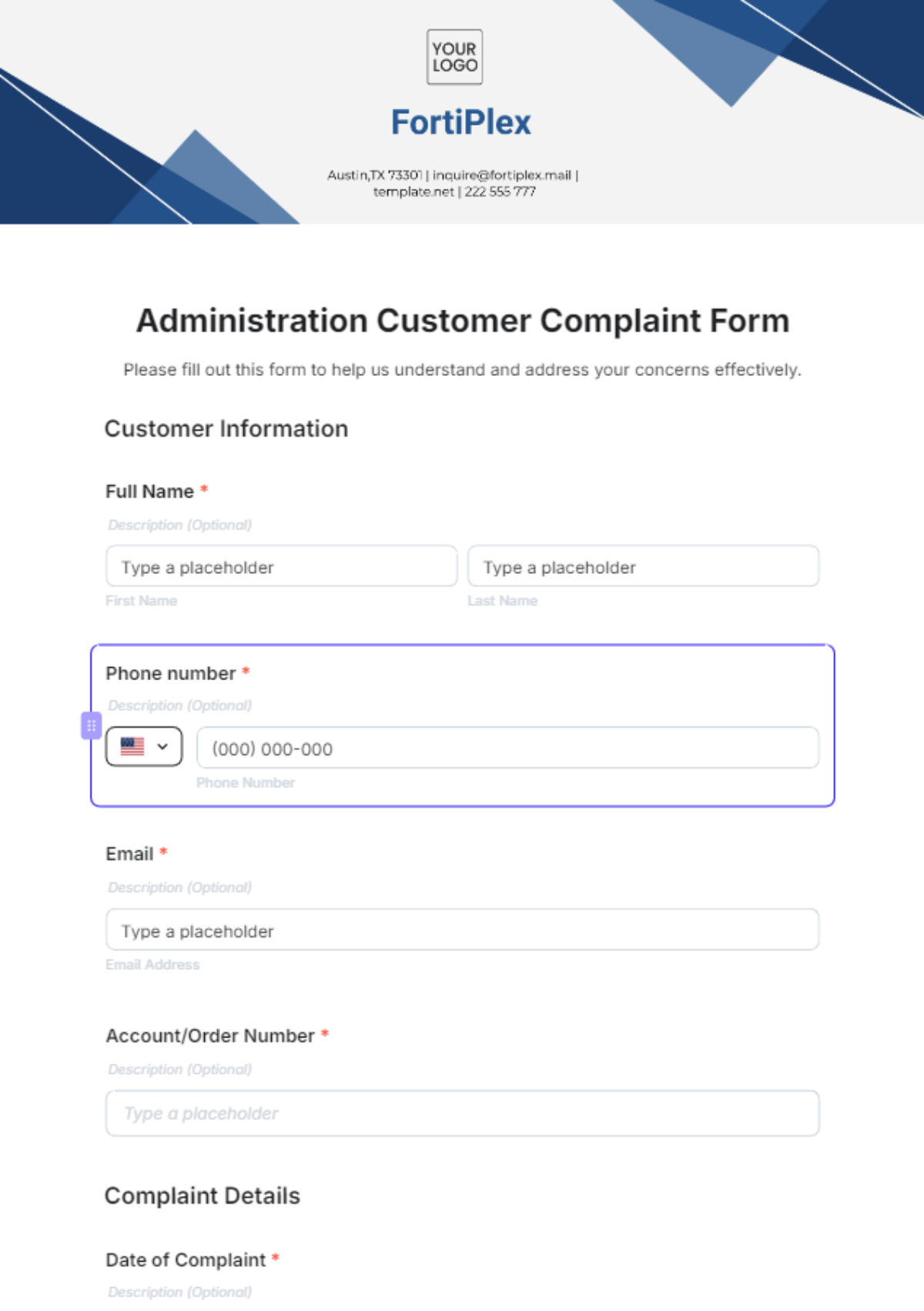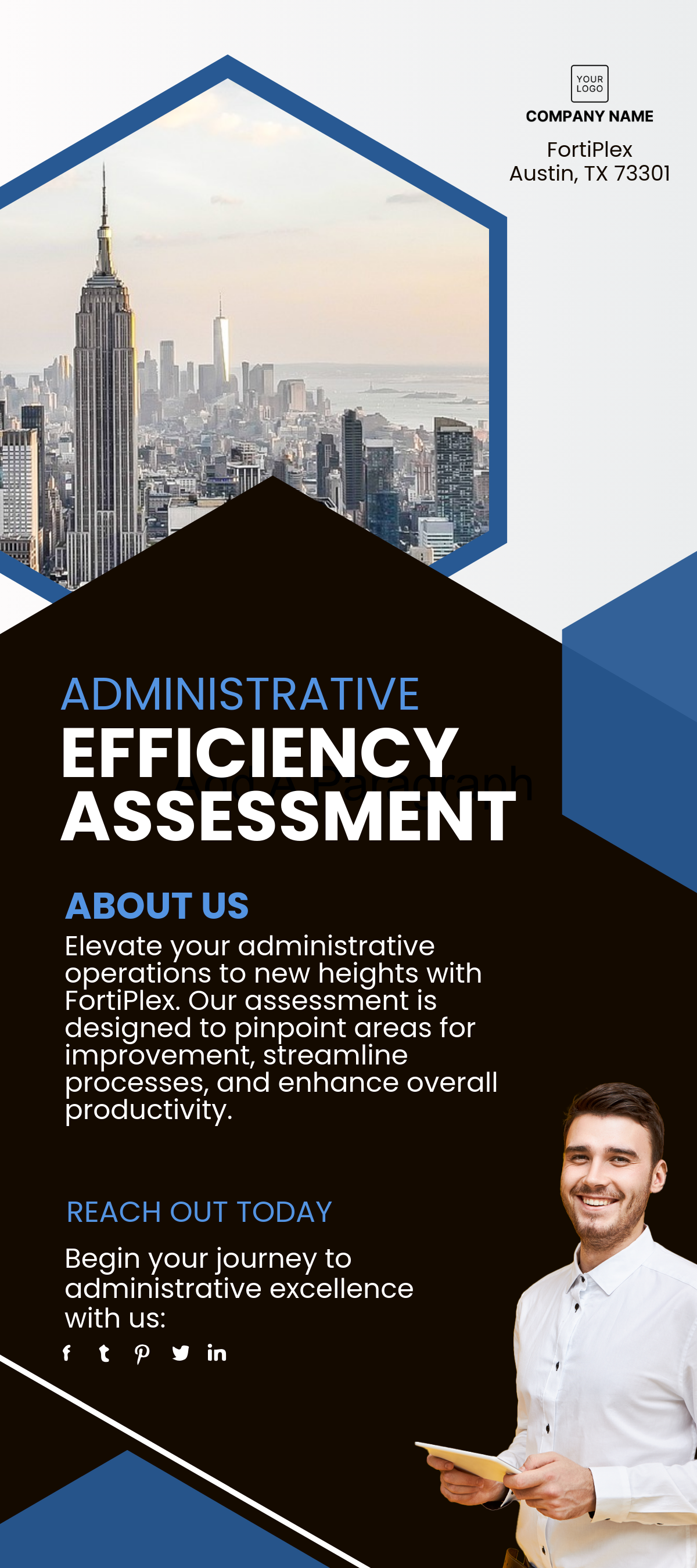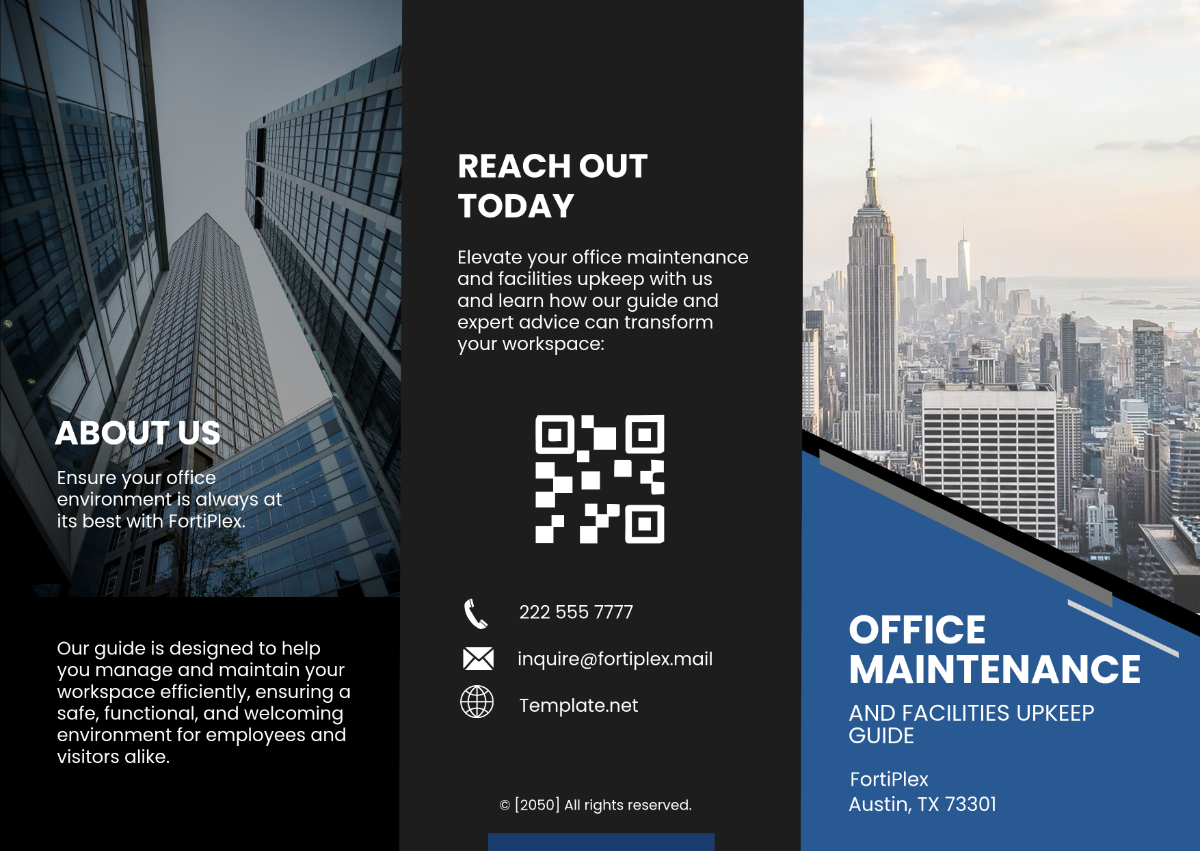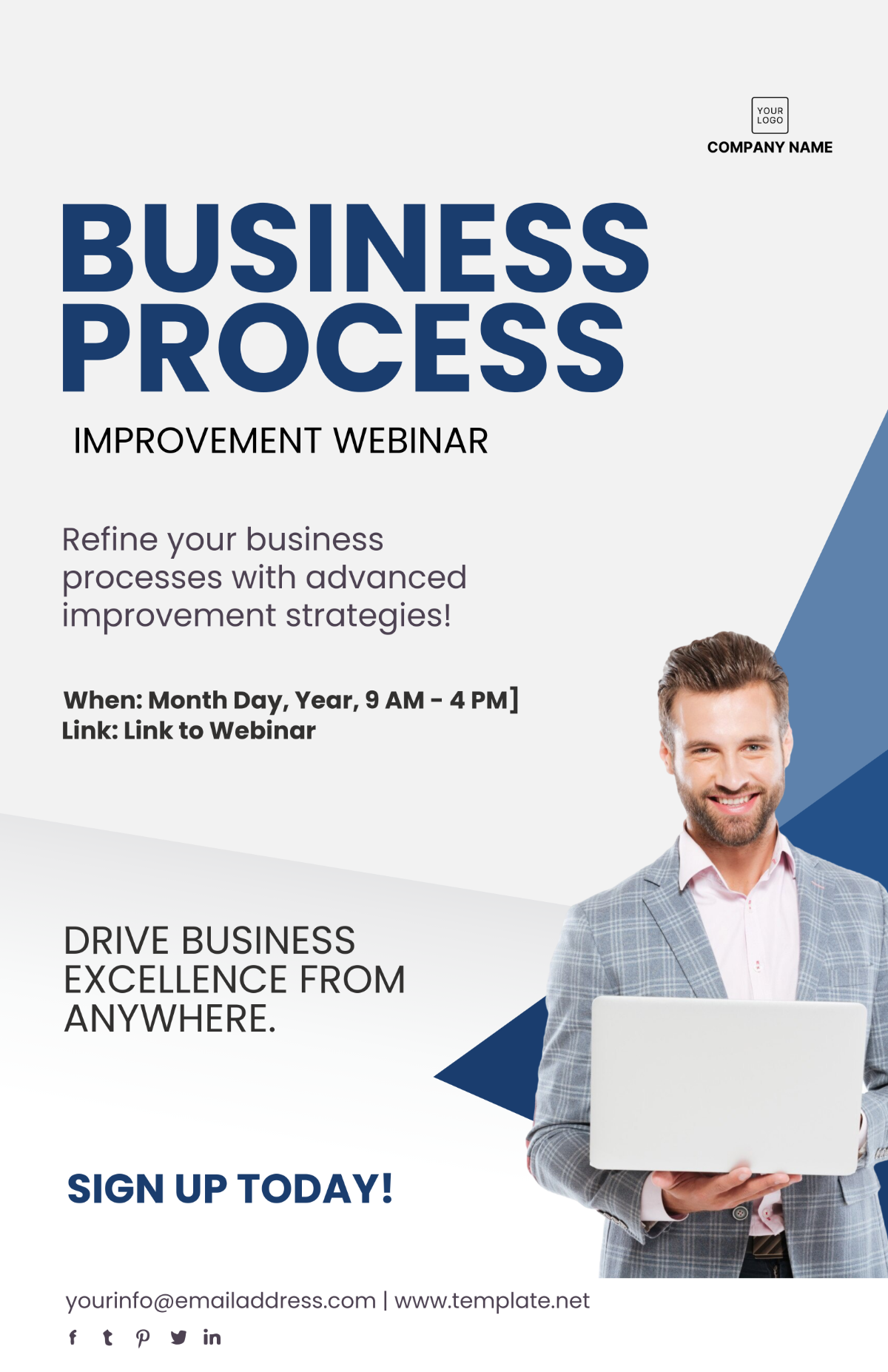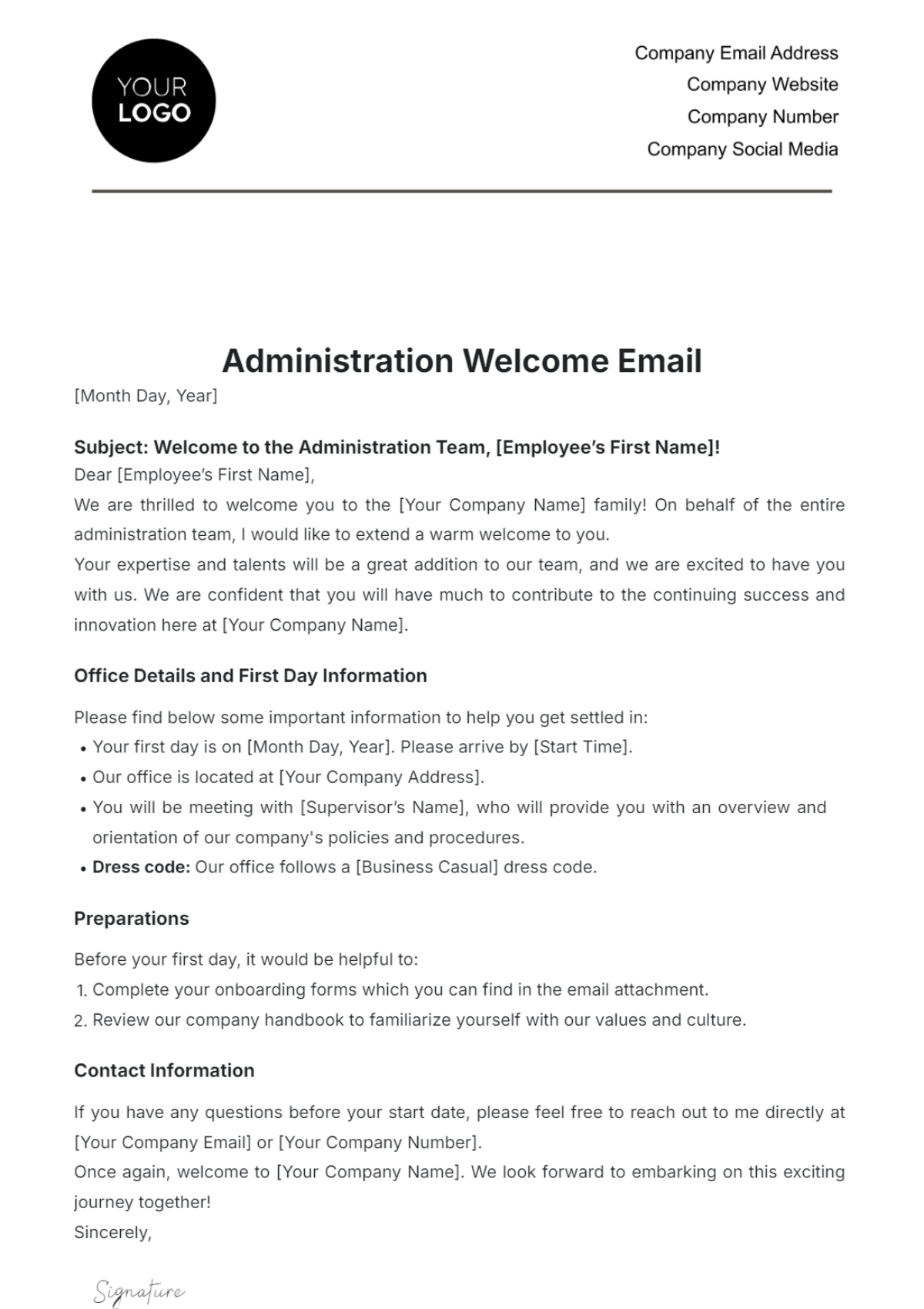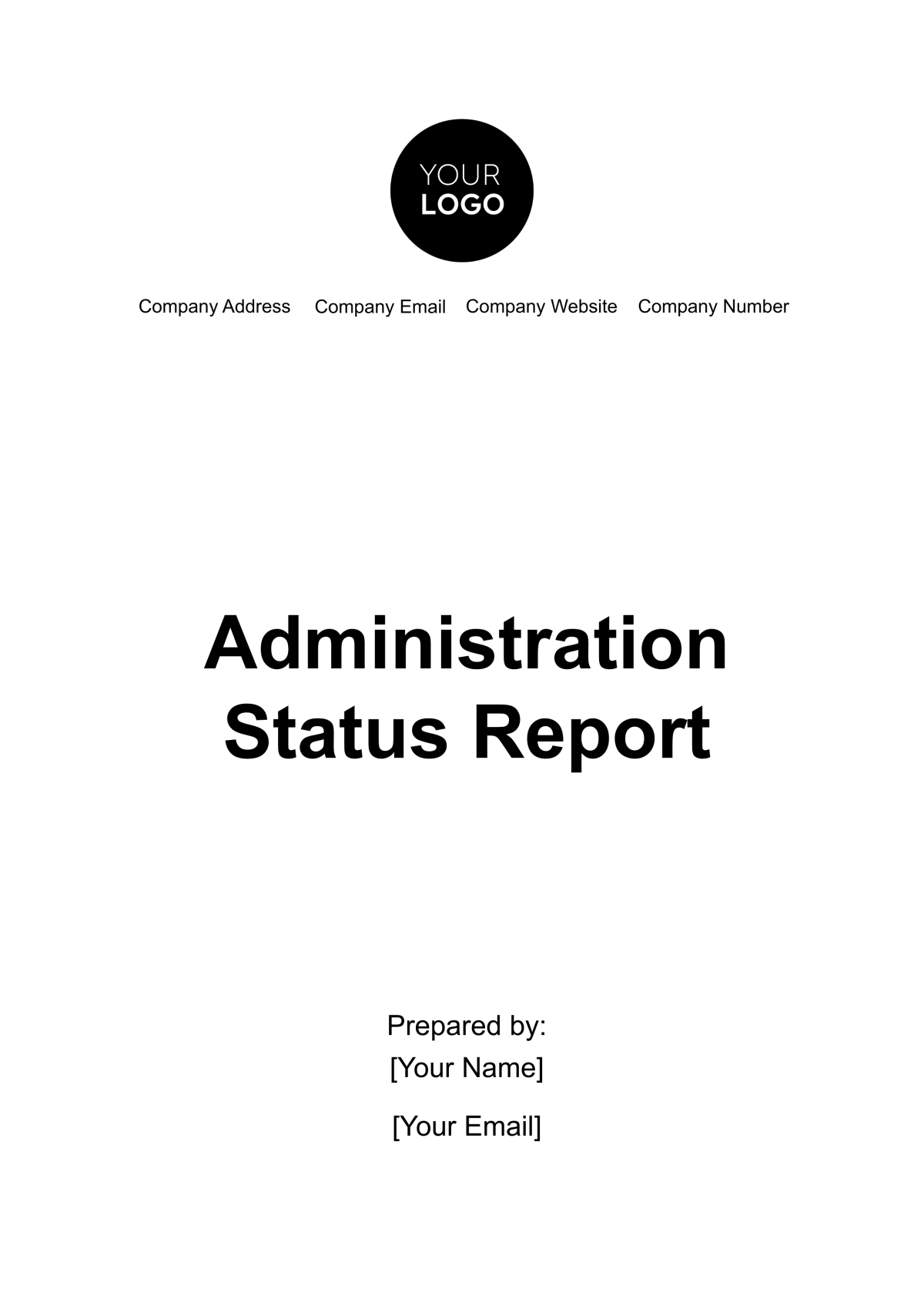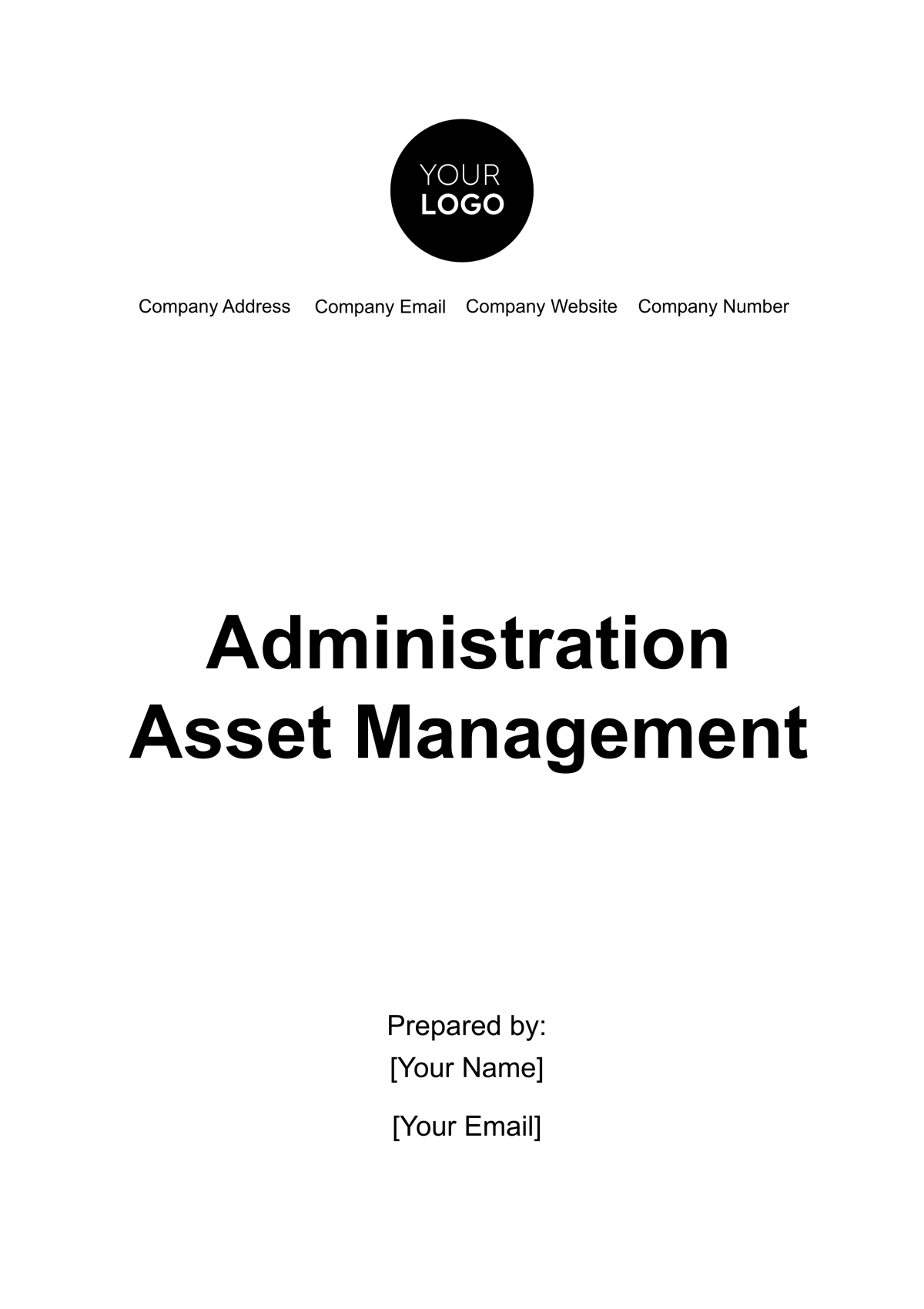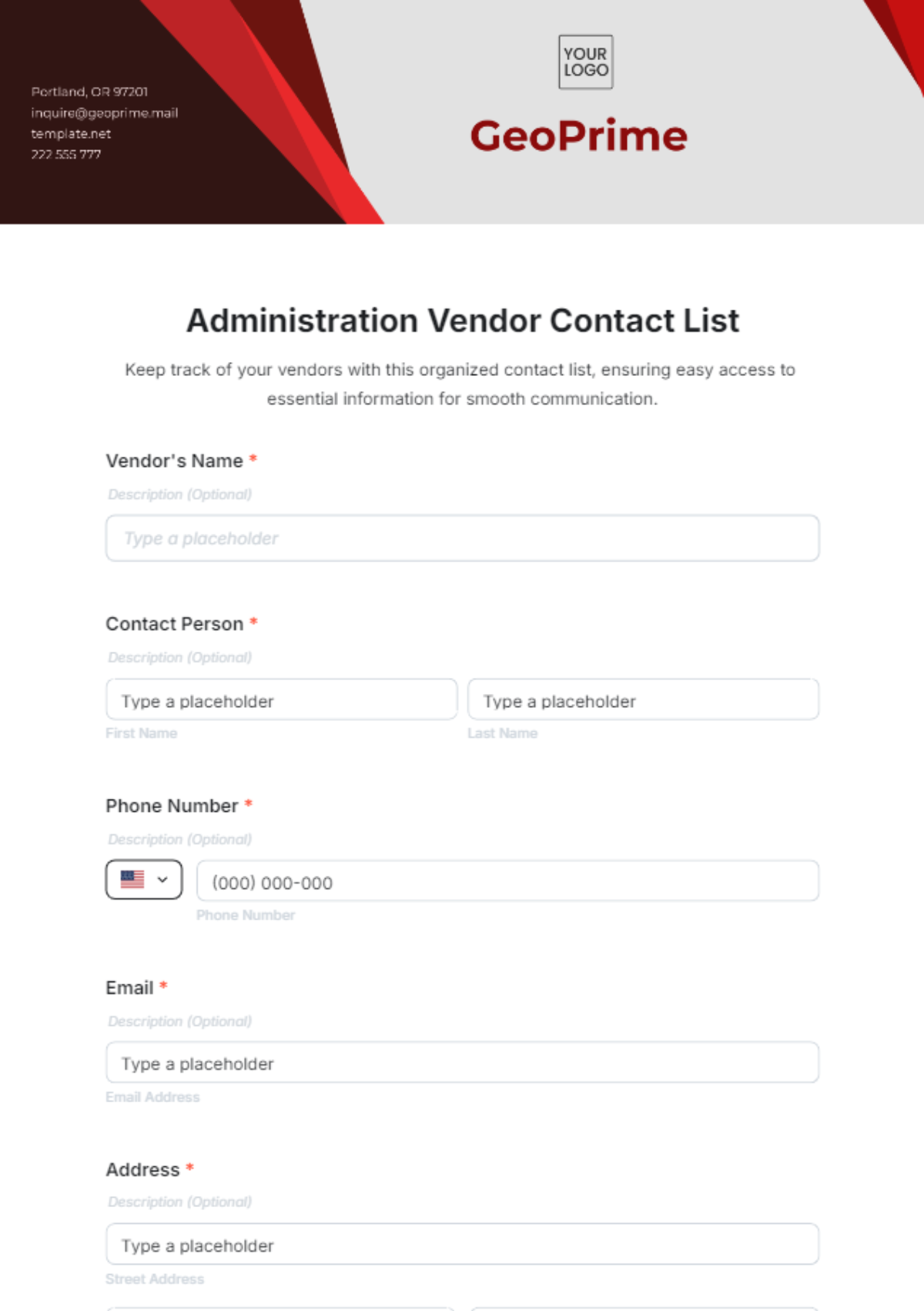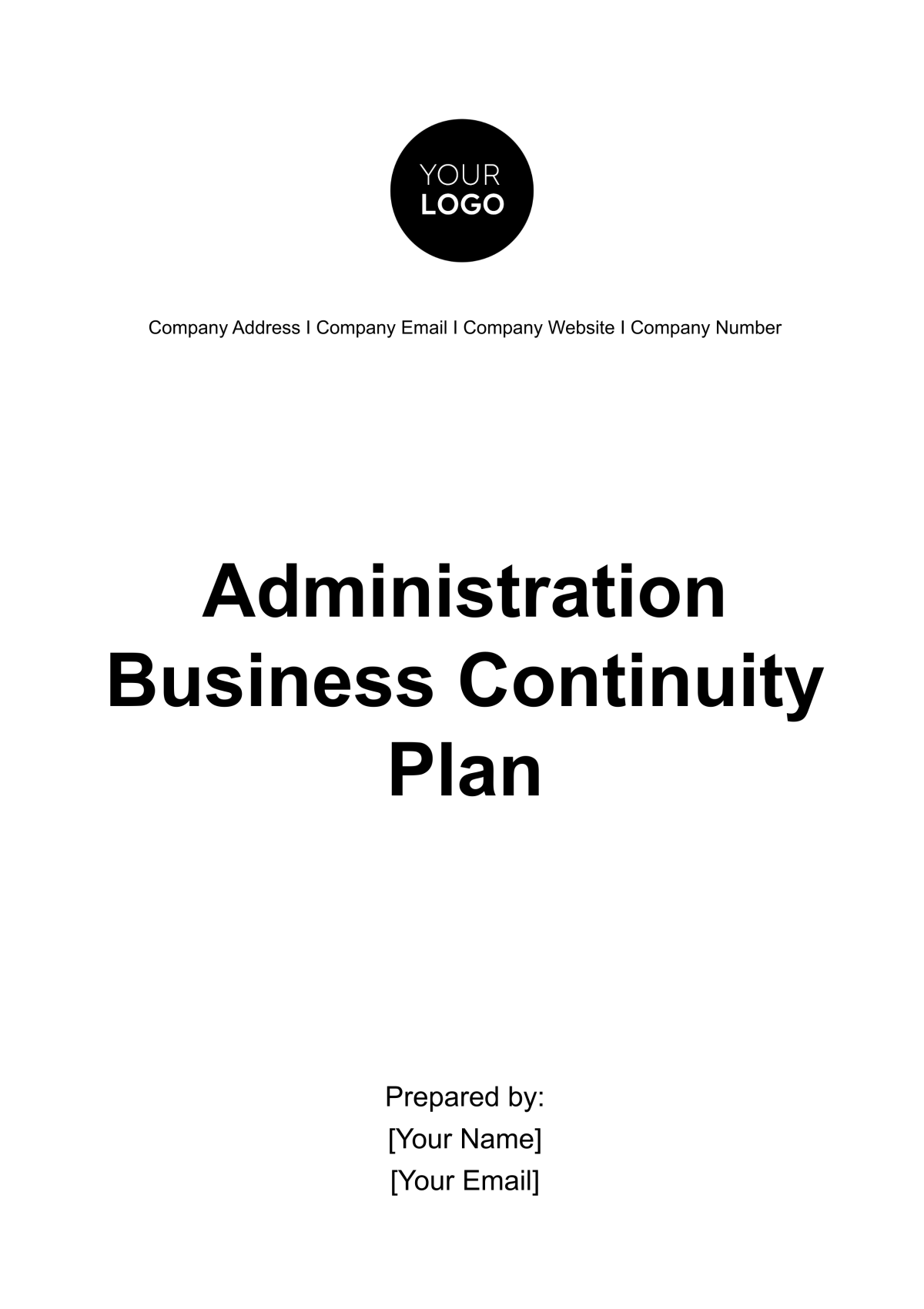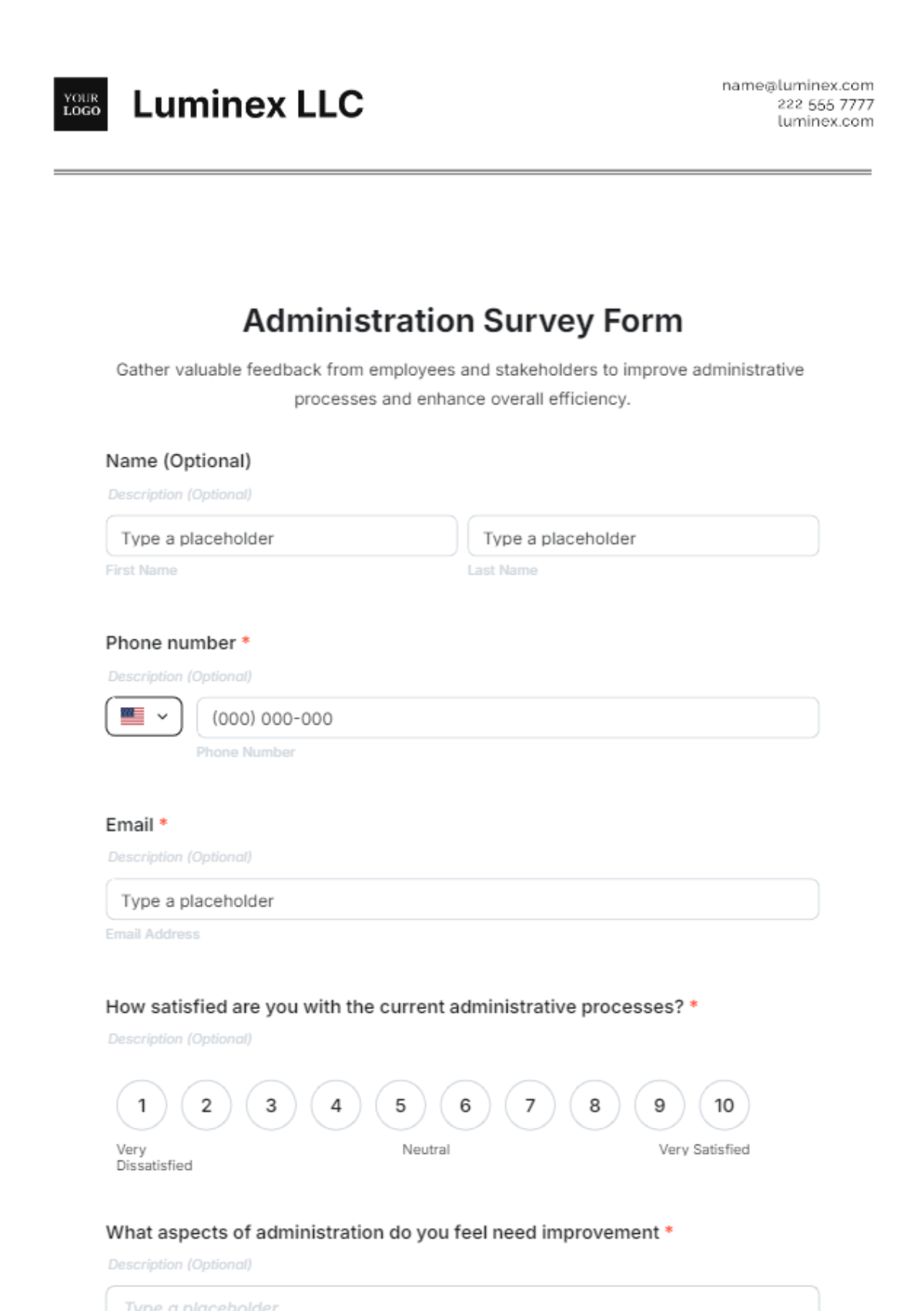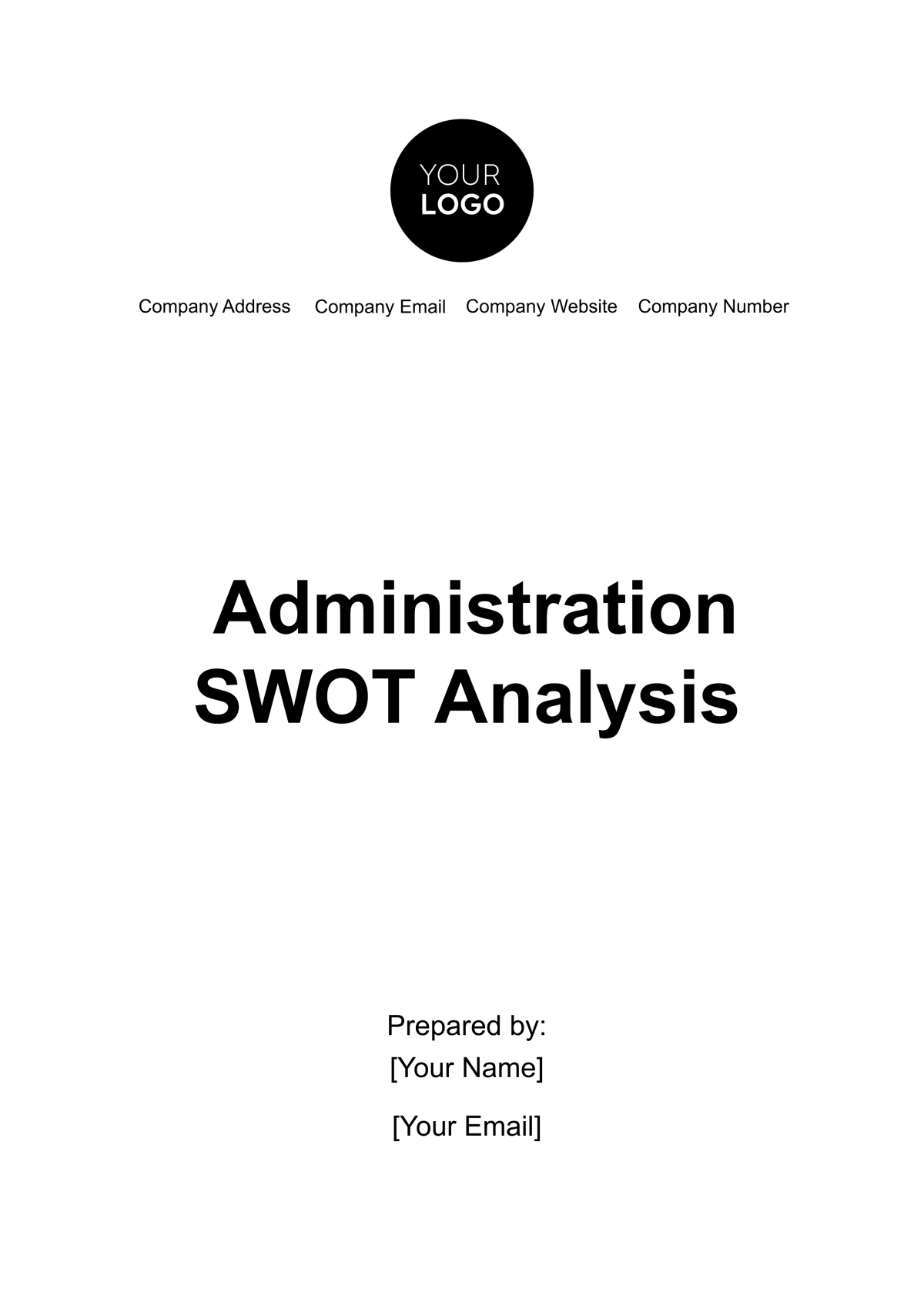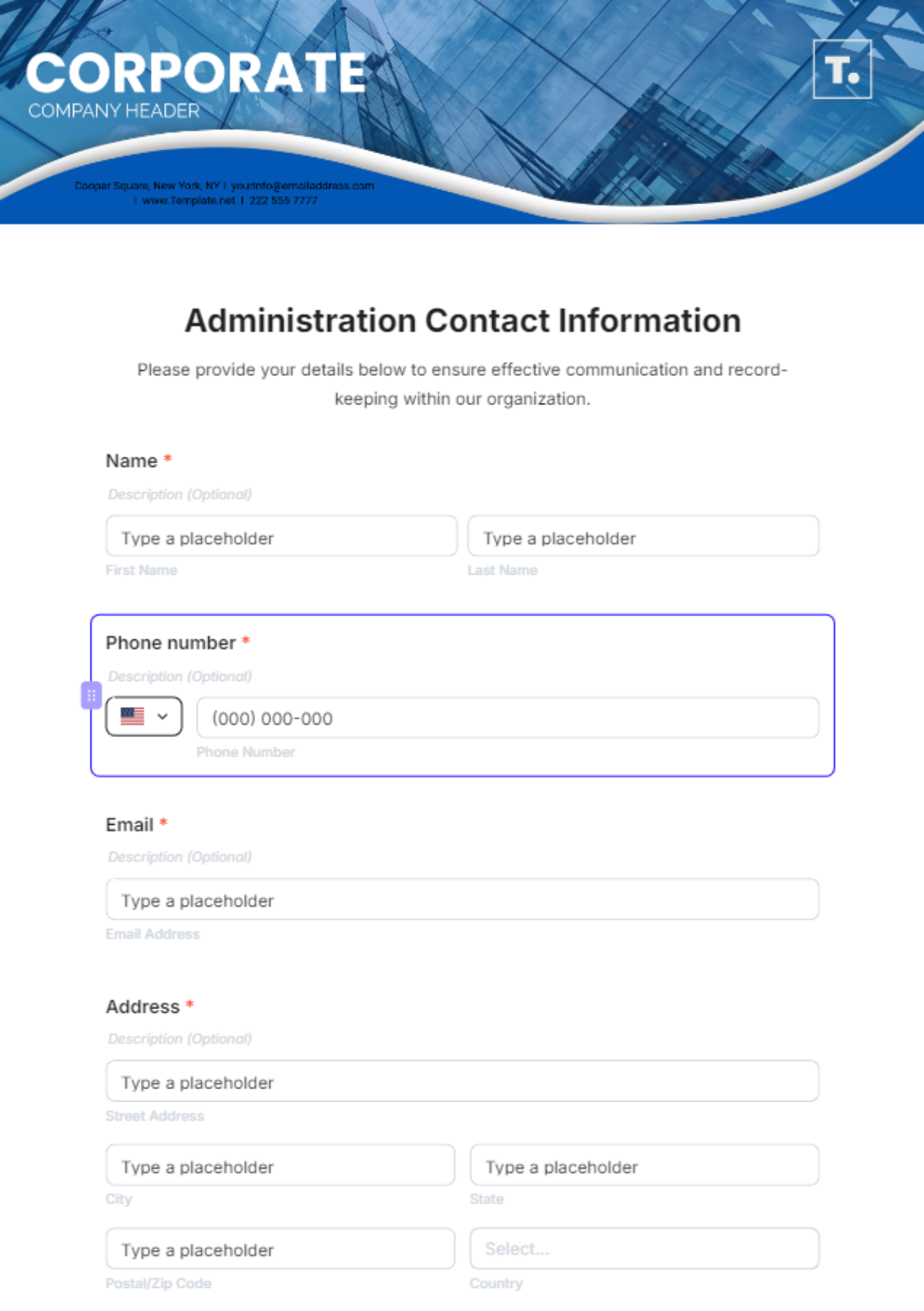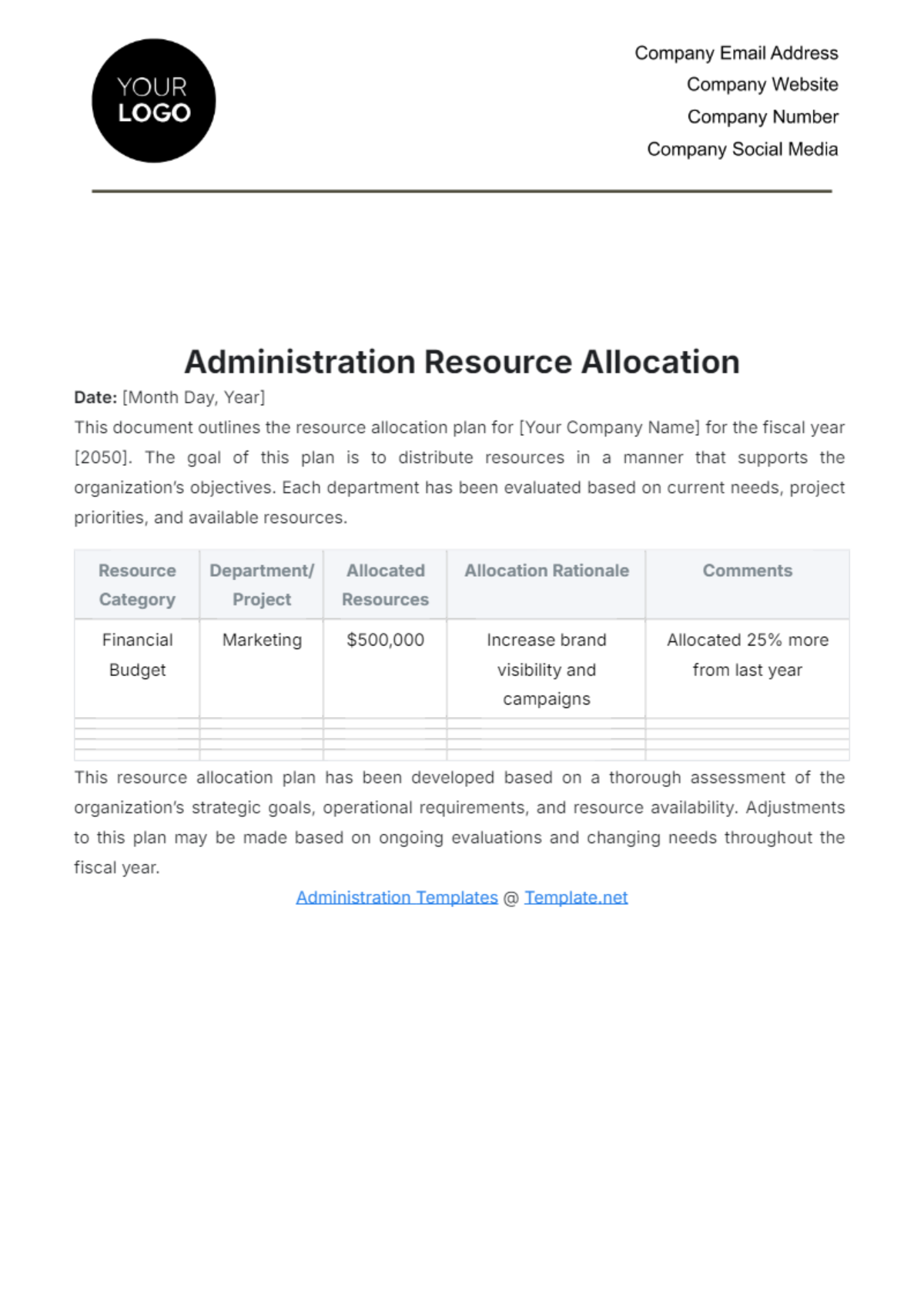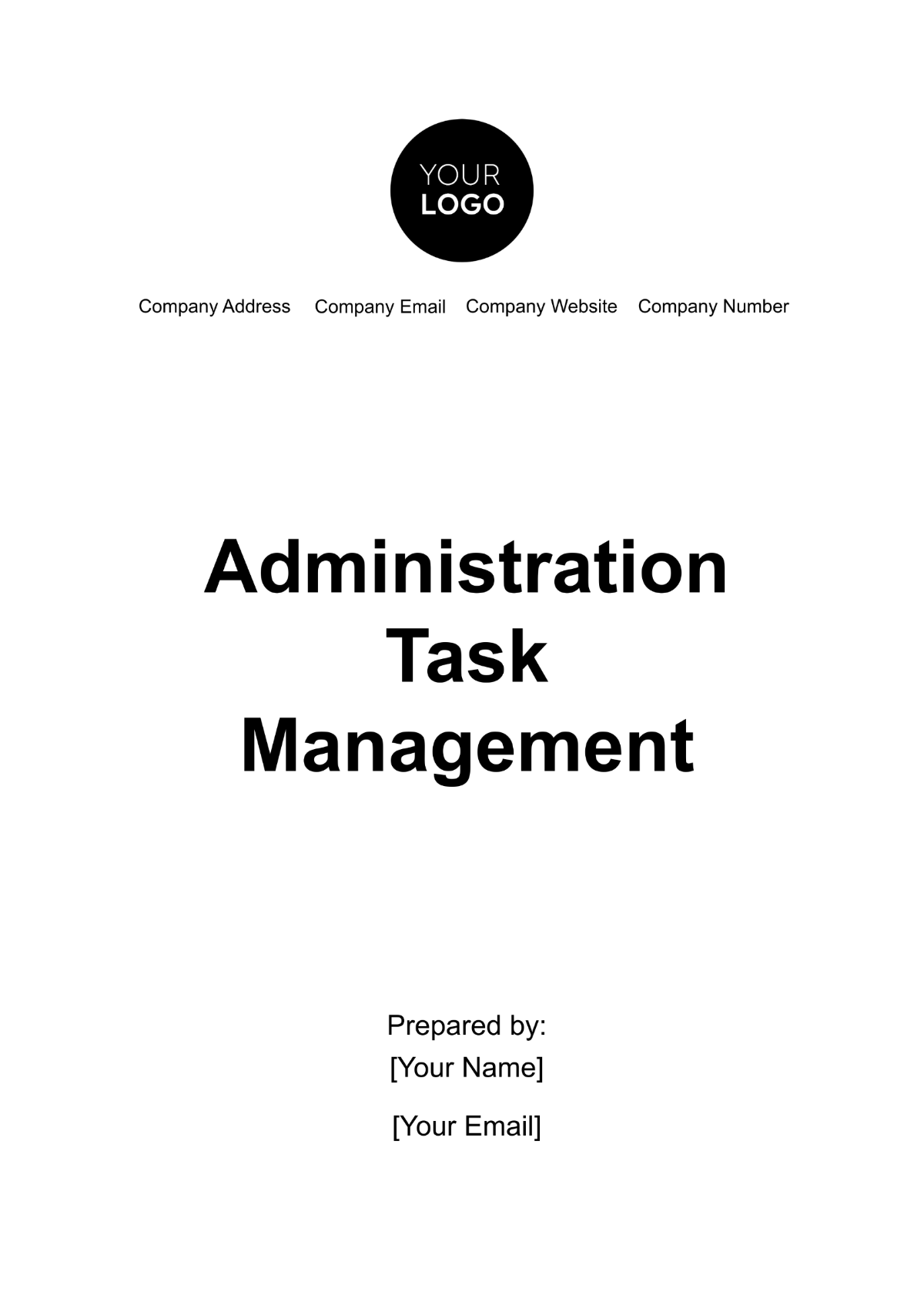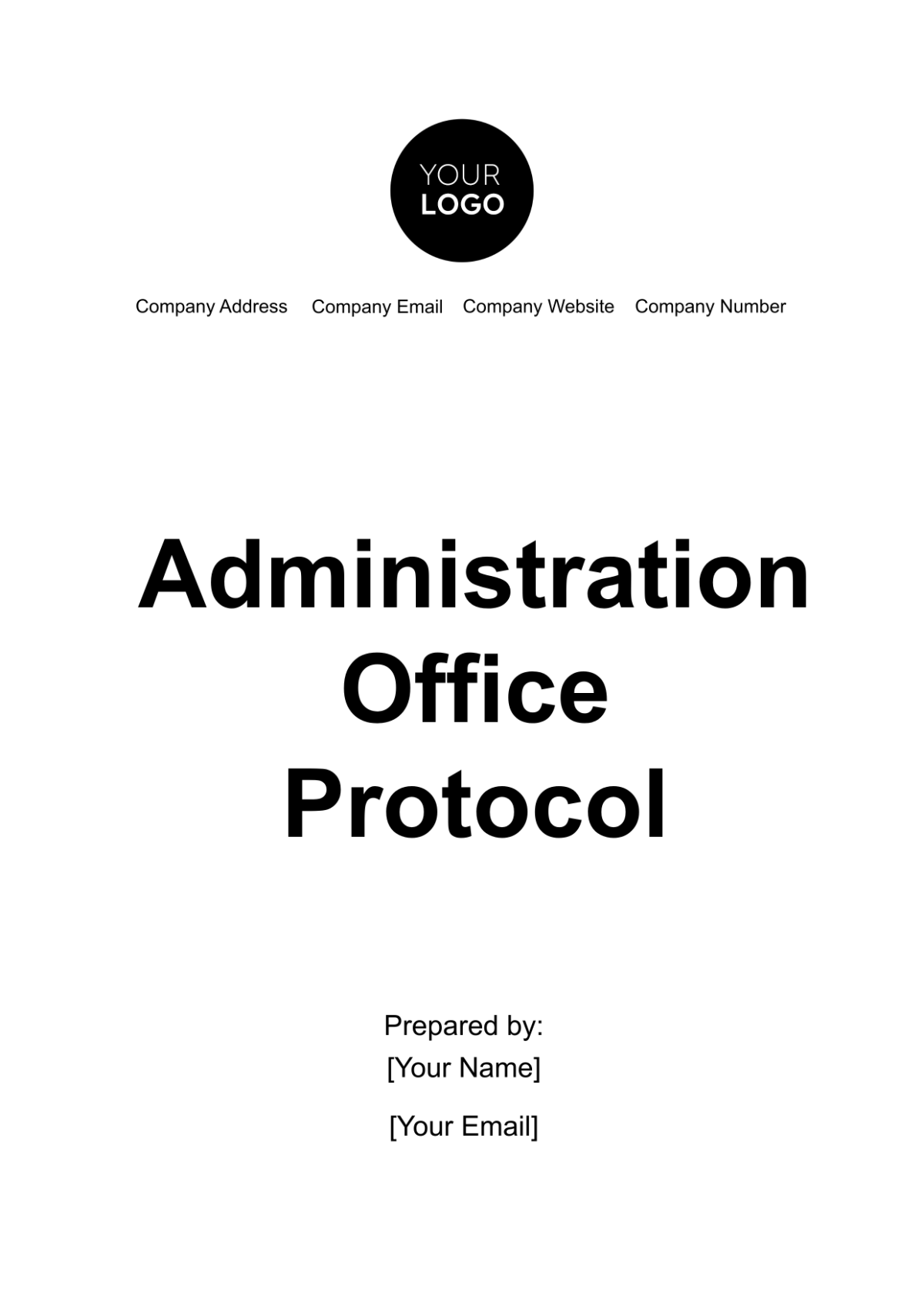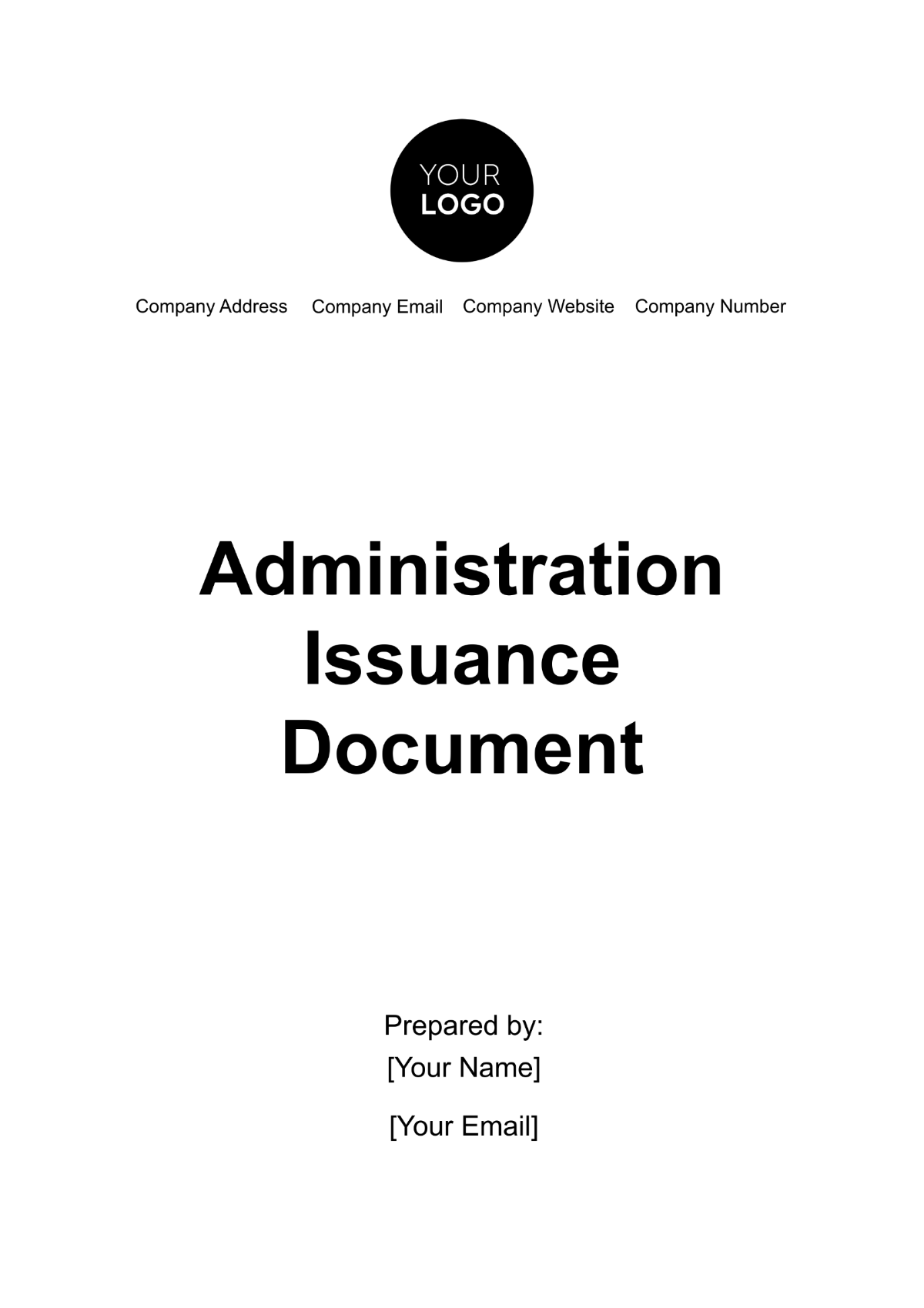Administration Change Management
I. Introduction
Change management is a crucial aspect of organizational administration at [Your Company Name]. It involves the systematic approach to managing changes in a way that minimizes disruption and ensures a smooth transition. As businesses evolve, adapting to new technologies, processes, and market conditions is essential for maintaining competitive advantage and operational efficiency. This document outlines the processes and guidelines that [Your Company Name] follows to manage changes effectively, ensuring that all changes are implemented in a controlled and orderly manner.
At [Your Company Name], change management is not merely a reaction to unforeseen events but a proactive strategy embedded in our organizational culture. By adhering to well-defined procedures and involving key stakeholders throughout the process, we aim to enhance our ability to respond to change while safeguarding our core operations. This structured approach helps mitigate risks, optimize resources, and achieve desired outcomes, ultimately contributing to the overall success of our company. Through this document, we seek to provide clarity and guidance on managing changes, fostering an environment of adaptability and continuous improvement.
II. Objectives
The Administration Change Management process at [Your Company Name] is designed to achieve key objectives that ensure successful adaptation to change. These objectives are central to maintaining operational stability and enhancing our organizational effectiveness. By clearly defining and pursuing these goals, we aim to manage change proactively and efficiently, aligning our strategies with the company's broader vision and values.
The primary objectives of the Administration Change Management process are:
To manage the impact of change on the organization.
To ensure smooth transitions with minimal disruption to services.
To maximize the benefits of change while minimizing risks.
To foster a culture of continuous improvement and adaptability.
III. Scope
This document encompasses all changes within the administration department at [Your Company Name], including, but not limited to, modifications in policies, procedures, organizational structure, technology systems, and key personnel. It provides a comprehensive framework for managing these changes to ensure they are implemented effectively and align with the company’s objectives. By covering a wide range of administrative alterations, the document aims to standardize the change management process and address various scenarios that may arise.
All members of the administration team are required to familiarize themselves with this document and adhere to its guidelines. This ensures that every change is approached systematically and consistently, minimizing disruption and maintaining operational efficiency. Through this comprehensive scope, [Your Company Name] strives to support a well-organized and adaptive administrative environment.
IV. Change Management Framework
The Change Management Framework at [Your Company Name] provides a structured approach to managing organizational changes effectively. This framework is designed to guide each phase of the change process, ensuring that all necessary steps are systematically executed. By following this framework, we aim to address changes comprehensively, from initial identification through to successful implementation and evaluation.
Phase | Description |
|---|---|
Initiation | Identify the need for change and define the scope and objectives. |
Planning | Develop a detailed change management plan, including timelines and resources. |
Execution | Implement the change according to the plan, ensuring all stakeholders are informed and engaged. |
Monitoring | Track progress, address issues, and make adjustments as necessary. |
Closure | Conclude the change process, including documenting lessons learned and celebrating successes. |
V. Roles and Responsibilities
Effectively managing change requires a clear understanding of the roles and responsibilities of each participant involved in the process. A well-defined structure ensures that everyone knows their duties and contributes effectively to the success of the change initiative.
The following roles are critical to the change management process:
Role | Description |
|---|---|
Change Sponsor | Provides overall direction and support for the change initiative. |
Change Manager | Oversees the day-to-day management of the change process and coordinates activities. |
Change Team | A group of individuals responsible for carrying out specific tasks related to the change. |
Stakeholders | Anyone affected by the change, whose input and support are vital for success. |
VI. Communication Plan
Effective communication is a cornerstone of successful change management at [Your Company Name]. A well-structured communication plan ensures that all stakeholders are informed, engaged, and supportive throughout the change process. This plan serves to facilitate smooth transitions, address concerns, and maintain transparency, which are critical for minimizing resistance and achieving desired outcomes.
The communication plan includes several key components:
Regular Updates: Providing stakeholders with consistent updates on the progress of the change initiative is essential. Regular communication helps keep everyone informed about milestones, upcoming activities, and any adjustments to the plan. These updates should be scheduled at appropriate intervals and delivered through various channels such as emails, newsletters, or meetings to ensure broad reach and accessibility.
Clear and Transparent Messaging: Effective change management relies on clear and transparent messaging to address any concerns and minimize resistance. Communicating the reasons for the change, the benefits, and the impact on stakeholders helps to build trust and understanding. Messages should be crafted to be straightforward and devoid of jargon, making them easily comprehensible to all parties involved.
Feedback Mechanisms: Incorporating feedback mechanisms into the communication plan allows stakeholders to provide input and voice their concerns. This can be achieved through surveys, suggestion boxes, or focus groups. Actively seeking and addressing stakeholder feedback not only fosters engagement but also helps identify potential issues early on, enabling timely adjustments.
Schedule of Communication Activities: A detailed schedule of communication activities is crucial for maintaining consistency and ensuring that information is disseminated in a timely manner. This schedule should include regular meetings, status reports, email updates, and any other relevant communication activities. By adhering to this schedule, [Your Company Name] can ensure that all stakeholders receive the information they need and remain aligned with the change process.
VII. Risk Management
Effective risk management is a critical element in ensuring the success of any change initiative at [Your Company Name]. By proactively identifying and addressing potential risks, the organization can mitigate adverse effects and enhance the likelihood of achieving desired outcomes. The following key activities outline a comprehensive approach to managing risks throughout the change process:
Conducting a Thorough Risk Assessment: The first step in risk management involves identifying potential issues that could impact the change initiative. A thorough risk assessment should be conducted to evaluate various types of risks, including operational, financial, technological, and human factors. This assessment involves analyzing the likelihood and impact of each risk, allowing [Your Company Name] to prioritize them based on their potential significance.
Developing Contingency Plans: Once risks have been identified, developing contingency plans is crucial for addressing them effectively. These plans should outline specific actions to be taken if a risk materializes, including resource allocation, alternative strategies, and mitigation measures. By having these plans in place, [Your Company Name] can respond swiftly and effectively to unexpected challenges, minimizing disruption and maintaining progress.
Regularly Reviewing and Updating Risk Assessments: Risk management is not a one-time activity but an ongoing process. Regular reviews and updates of risk assessments are essential to adapt to new information, changing circumstances, and emerging risks. This iterative approach ensures that the risk management strategy remains relevant and effective throughout the entire change process.
Ensuring Open Communication and Readiness: Open communication is vital for managing risks effectively. Stakeholders should be kept informed about potential risks and the strategies in place to address them. Additionally, maintaining readiness to address new risks as they arise helps the organization stay agile and responsive. Encouraging feedback and fostering a culture of vigilance ensures that risks are promptly identified and managed.
VIII. Training and Support
Effective training and support are vital components for the successful implementation of any change initiative at [Your Company Name]. Ensuring that all stakeholders are adequately prepared for the change minimizes disruptions and fosters a smoother transition. The following elements outline a comprehensive approach to training and support:
Developing Tailored Training Programs: To address the diverse needs of different groups within the organization, tailored training programs should be developed. These programs should be designed to meet the specific requirements of various departments, roles, and levels of experience. By customizing training content, [Your Company Name] can ensure that each stakeholder receives relevant information and skills necessary for their role in the change process. Training methods may include workshops, seminars, online courses, and hands-on sessions to accommodate different learning styles.
Providing Resources and Tools: Equipping stakeholders with the right resources and tools is essential for effective learning and adaptation. This includes access to instructional materials, user manuals, online platforms, and practical tools that support the change. By providing comprehensive resources, [Your Company Name] helps stakeholders become familiar with new processes, technologies, or systems, facilitating a smoother transition and reducing the learning curve.
Offering Ongoing Support: Support should extend beyond the initial training phase to ensure continued assistance throughout the transition period. This may involve setting up help desks, providing one-on-one coaching, and establishing support teams to address questions and concerns. Ongoing support ensures that stakeholders can seek guidance as needed and resolve issues promptly, contributing to a more successful change implementation.
Creating a Feedback Loop: Implementing a feedback loop is crucial for continuously improving training efforts. Gathering feedback from stakeholders about the effectiveness of training programs and support services allows [Your Company Name] to make necessary adjustments and enhancements. This iterative process helps refine training approaches, address any gaps, and ensure that the support provided remains relevant and effective.
By integrating these training and support strategies, [Your Company Name] aims to equip stakeholders with the knowledge and confidence needed to embrace and effectively manage change, ultimately contributing to the overall success of the change initiative.
IX. Evaluation and Continuous Improvement
Evaluating the success of the change initiative and identifying areas for improvement are essential steps in the change management process. This involves:
Conducting post-implementation reviews to assess outcomes and identify lessons learned.
Gathering feedback from stakeholders through surveys, interviews, and focus groups.
Analyzing data to measure the impact of the change on key performance indicators.
Implementing improvements based on evaluation findings to enhance future change initiatives.
X. Conclusion
Effective change management is essential for the success and sustainability of [Your Company Name]. By adhering to the principles and guidelines detailed in this document, the administration department can navigate changes with greater ease, minimizing disruptions and maximizing the benefits. A well-structured change management process helps ensure that transitions are executed smoothly, aligning with the organization's strategic goals and fostering a positive environment for growth and adaptation.
The guidelines provided offer a comprehensive framework for managing change, from risk assessment and communication to training and support. Implementing these strategies enables the organization to respond proactively to changes, enhance operational efficiency, and achieve desired outcomes. For any additional guidance or support related to change management, please do not hesitate to reach out to the Change Management Office. Our team is dedicated to assisting you throughout the change process and ensuring that all aspects of the change initiative are handled effectively. Your engagement and adherence to these practices are crucial for our collective success and the ongoing advancement of [Your Company Name].
For further guidance and support, please contact the Change Management Office.

[Your Name]
